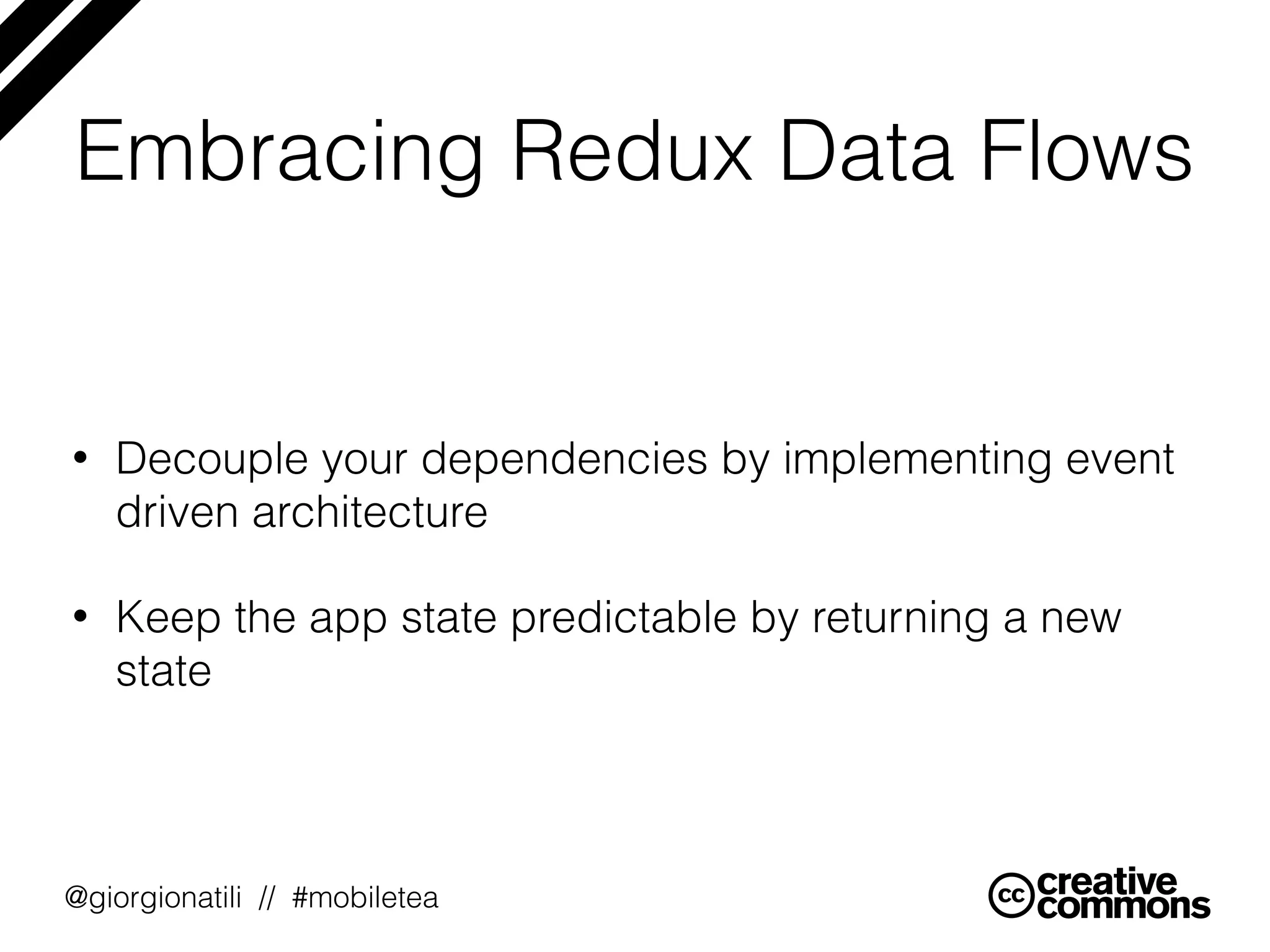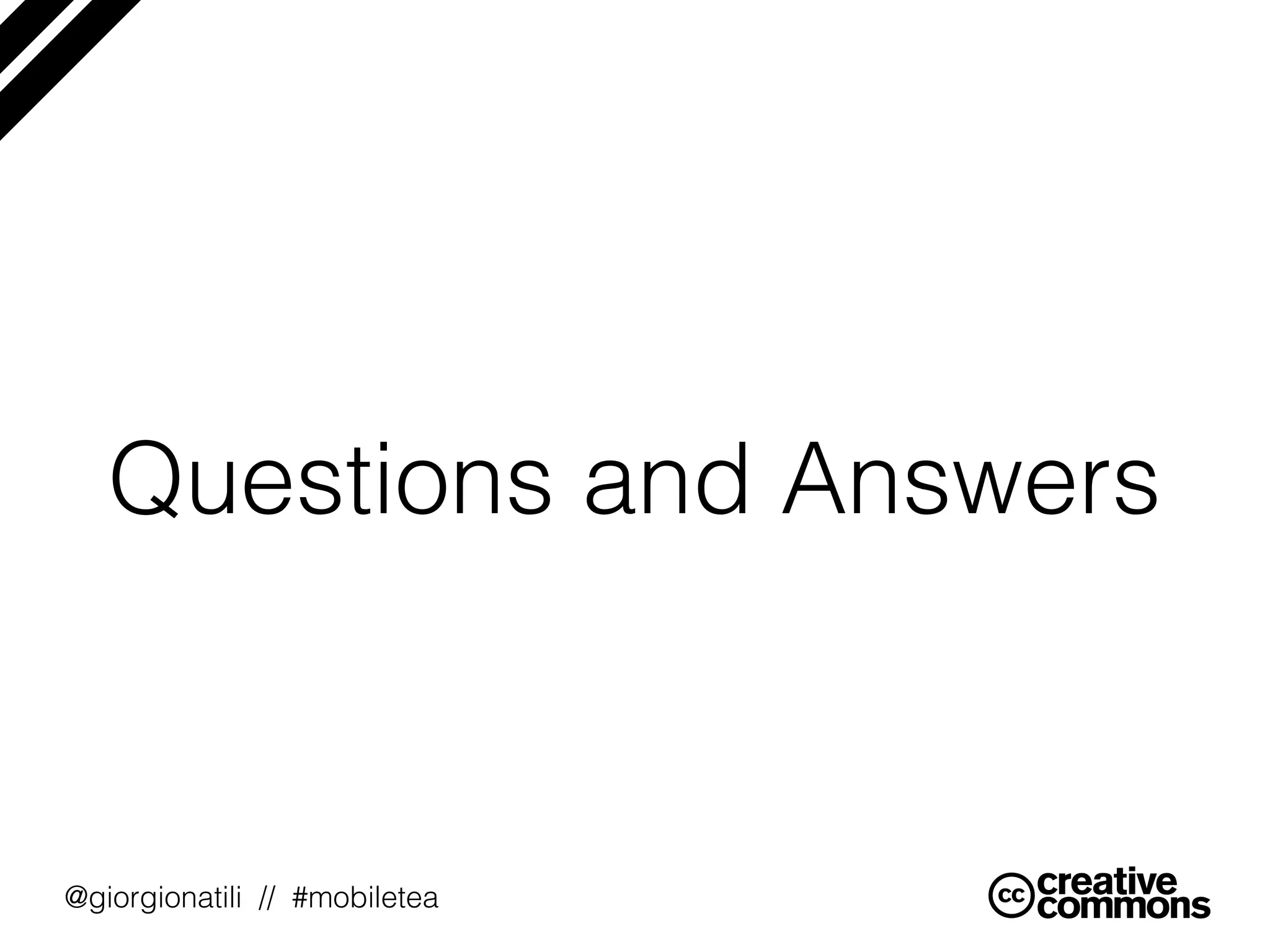The document is a presentation by Giorgio Natili on reactive programming with JavaScript, covering its past, present, and future, while discussing key concepts like functional programming, asynchronous applications, and frameworks such as Redux and Angular 2. It highlights the pros and cons of JavaScript, the evolution of the ECMAScript standard, and introduces functional reactive programming as a paradigm that enhances data handling through streams. The session also addresses practical implementations of these concepts using libraries like RxJS and Bacon.js.
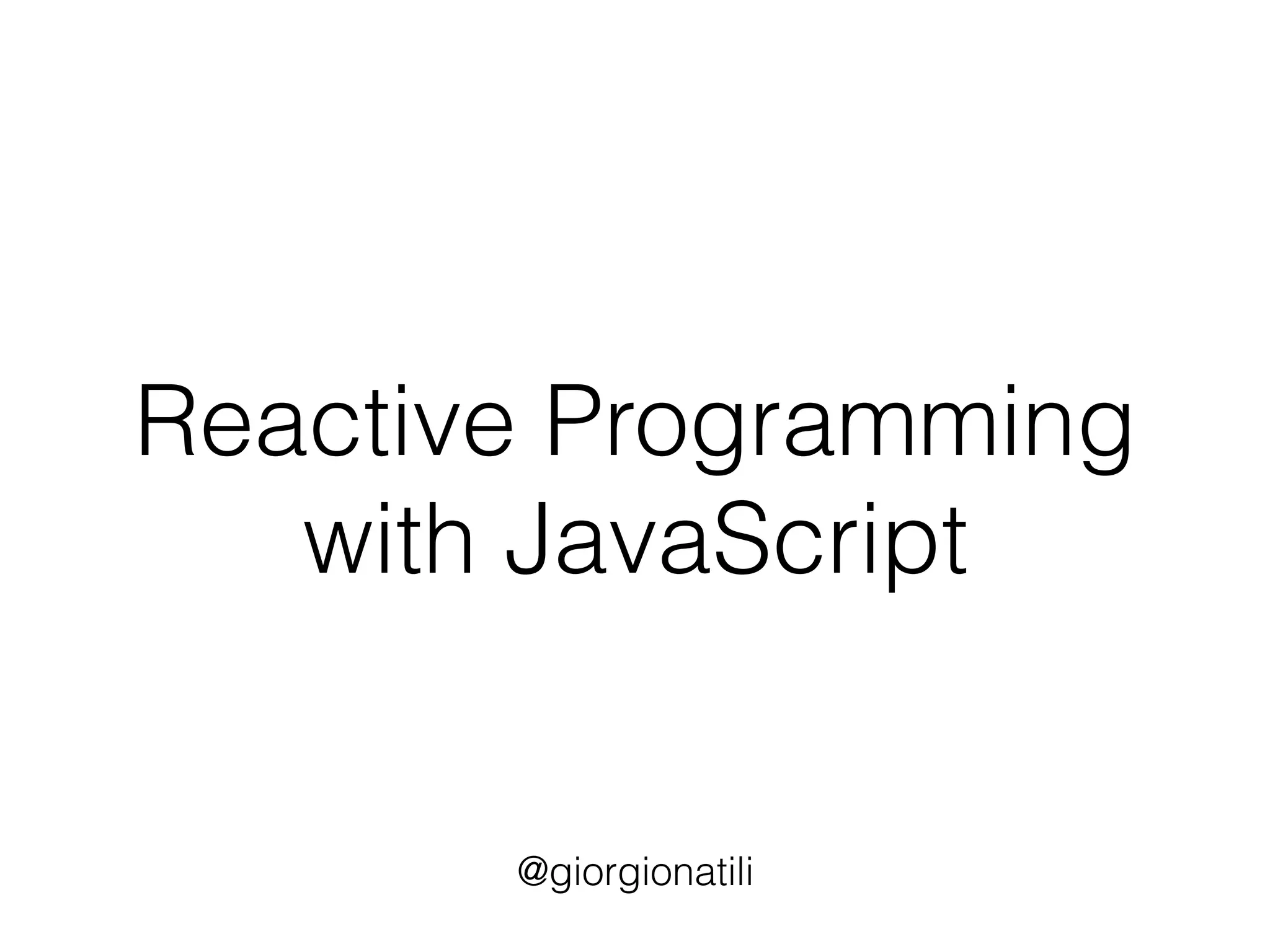



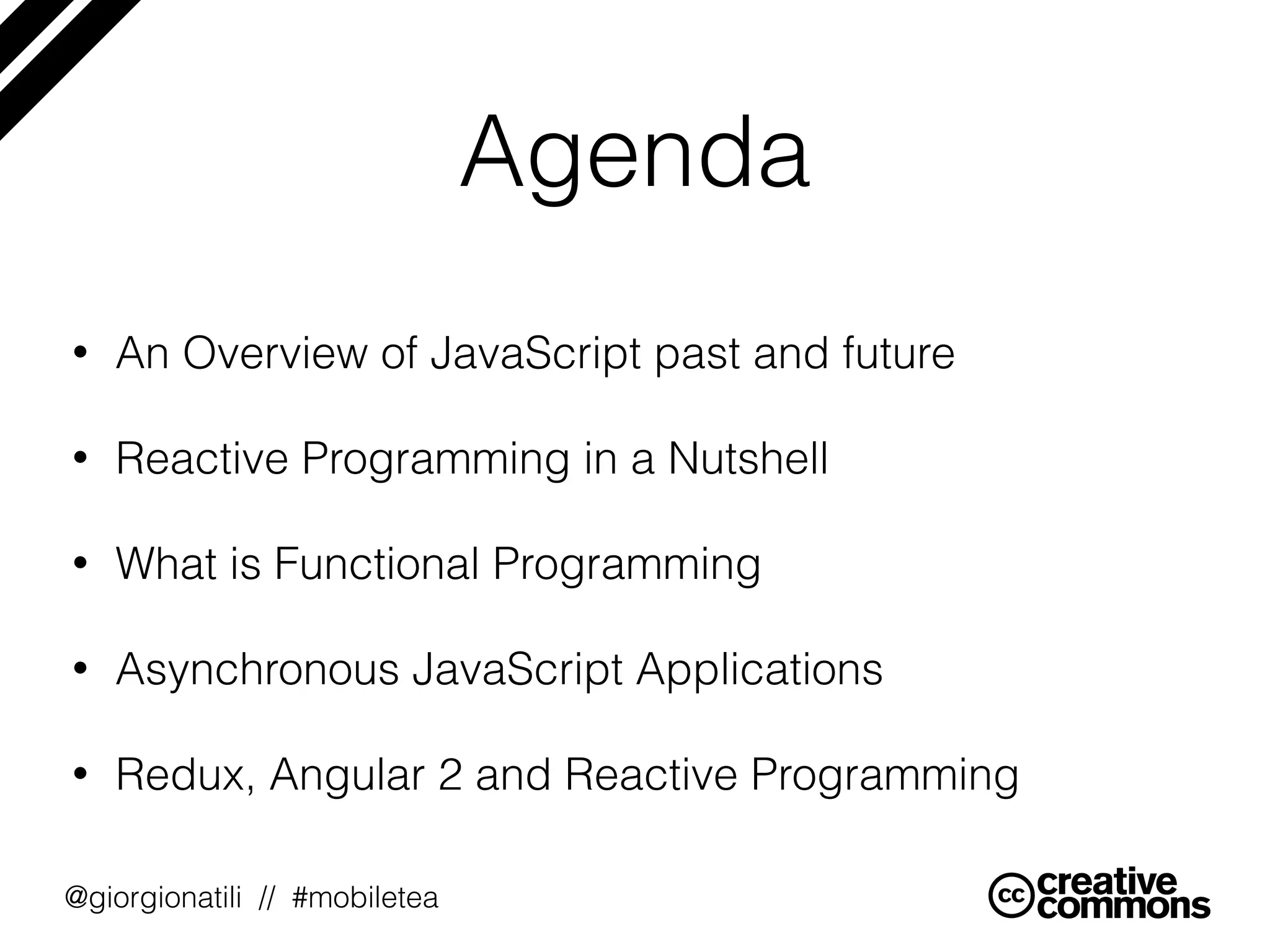
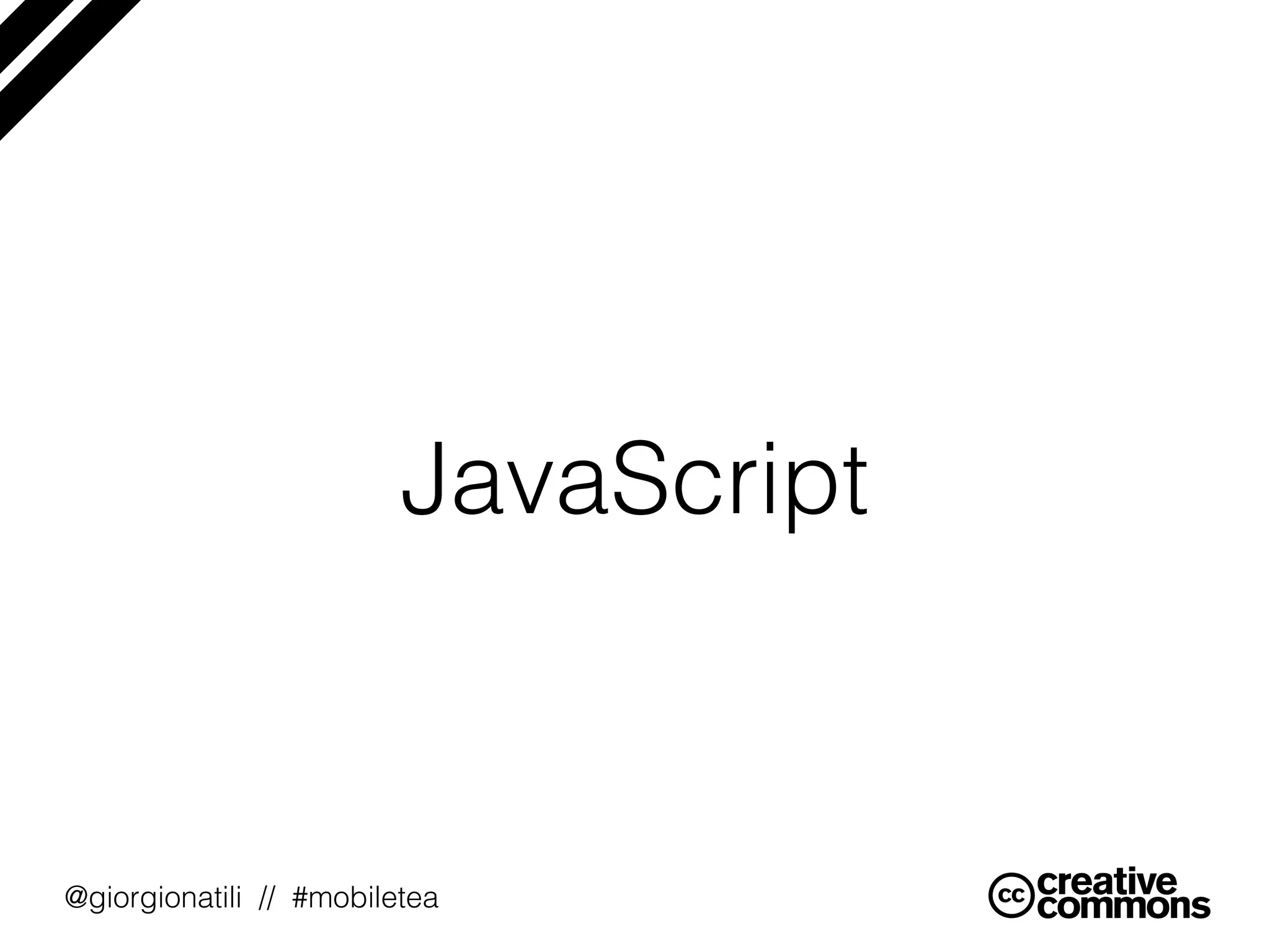
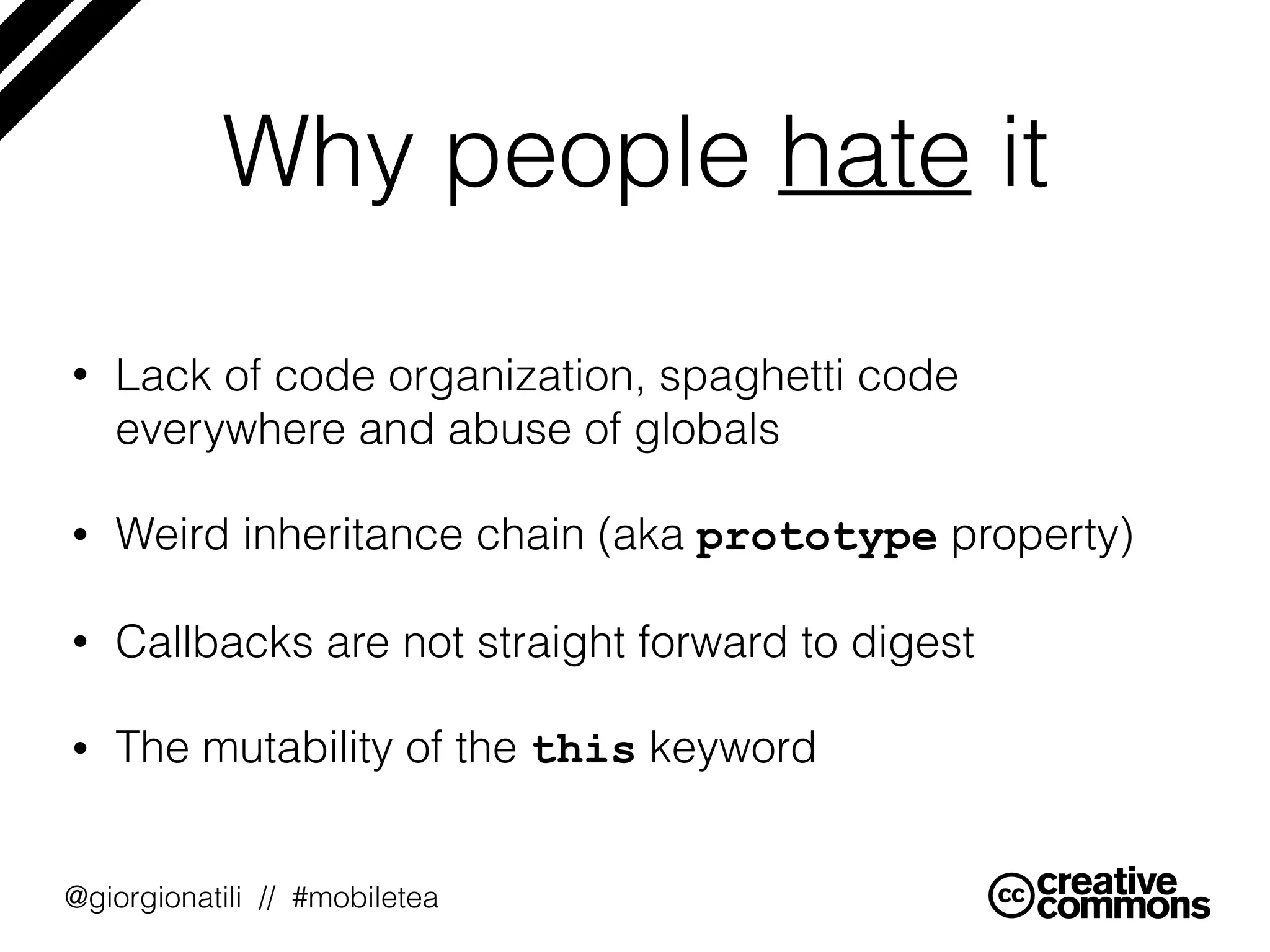
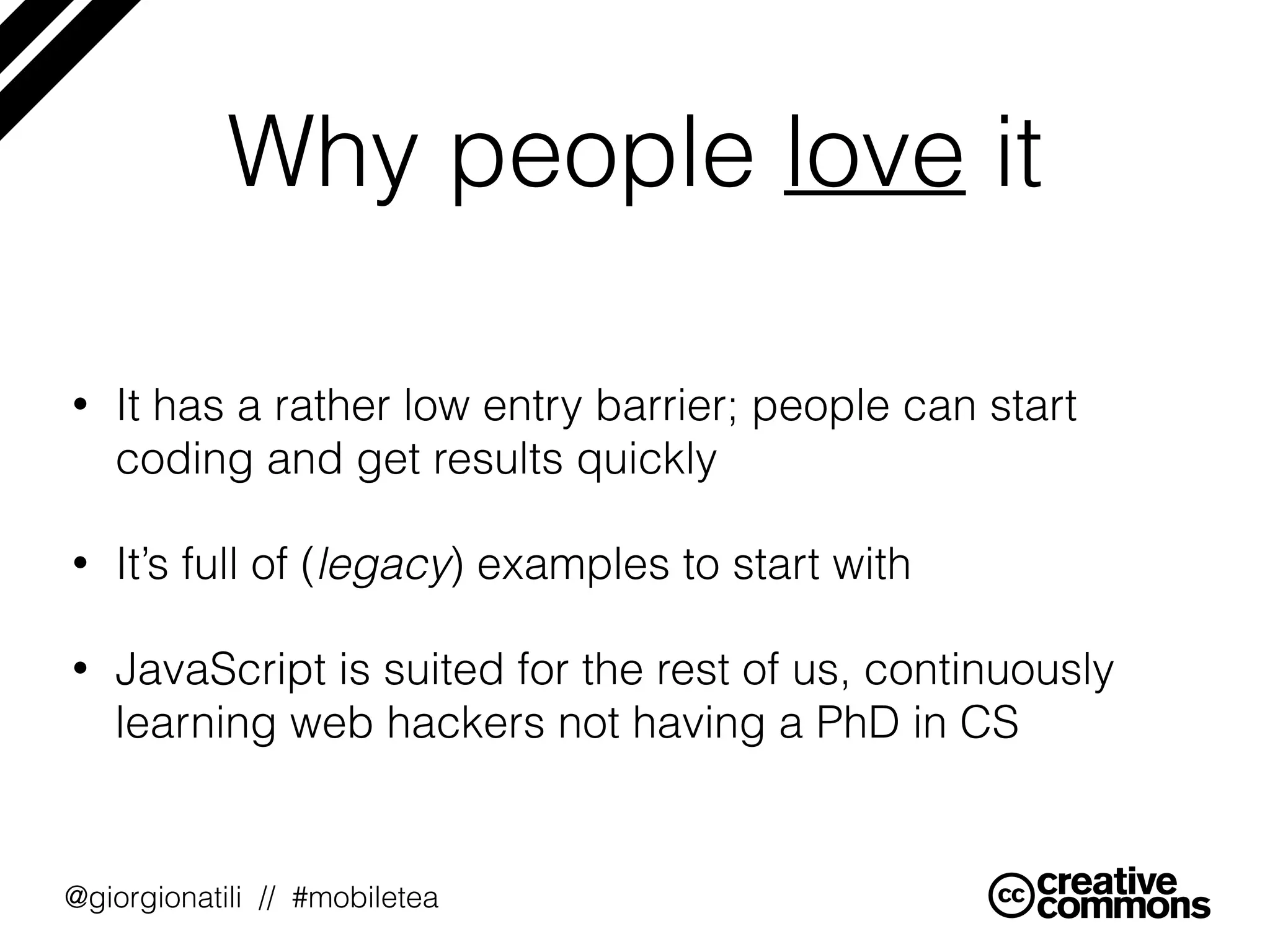

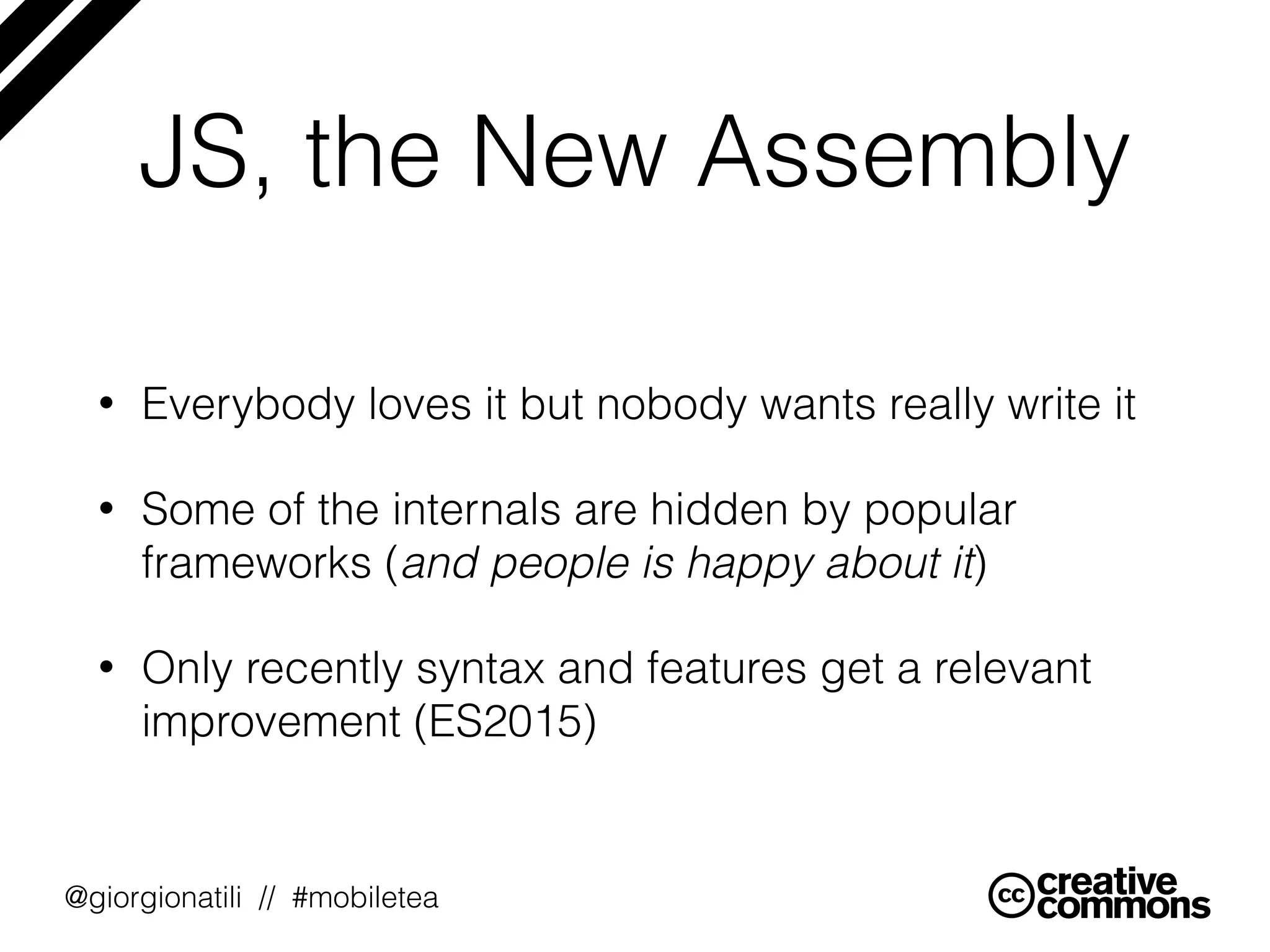

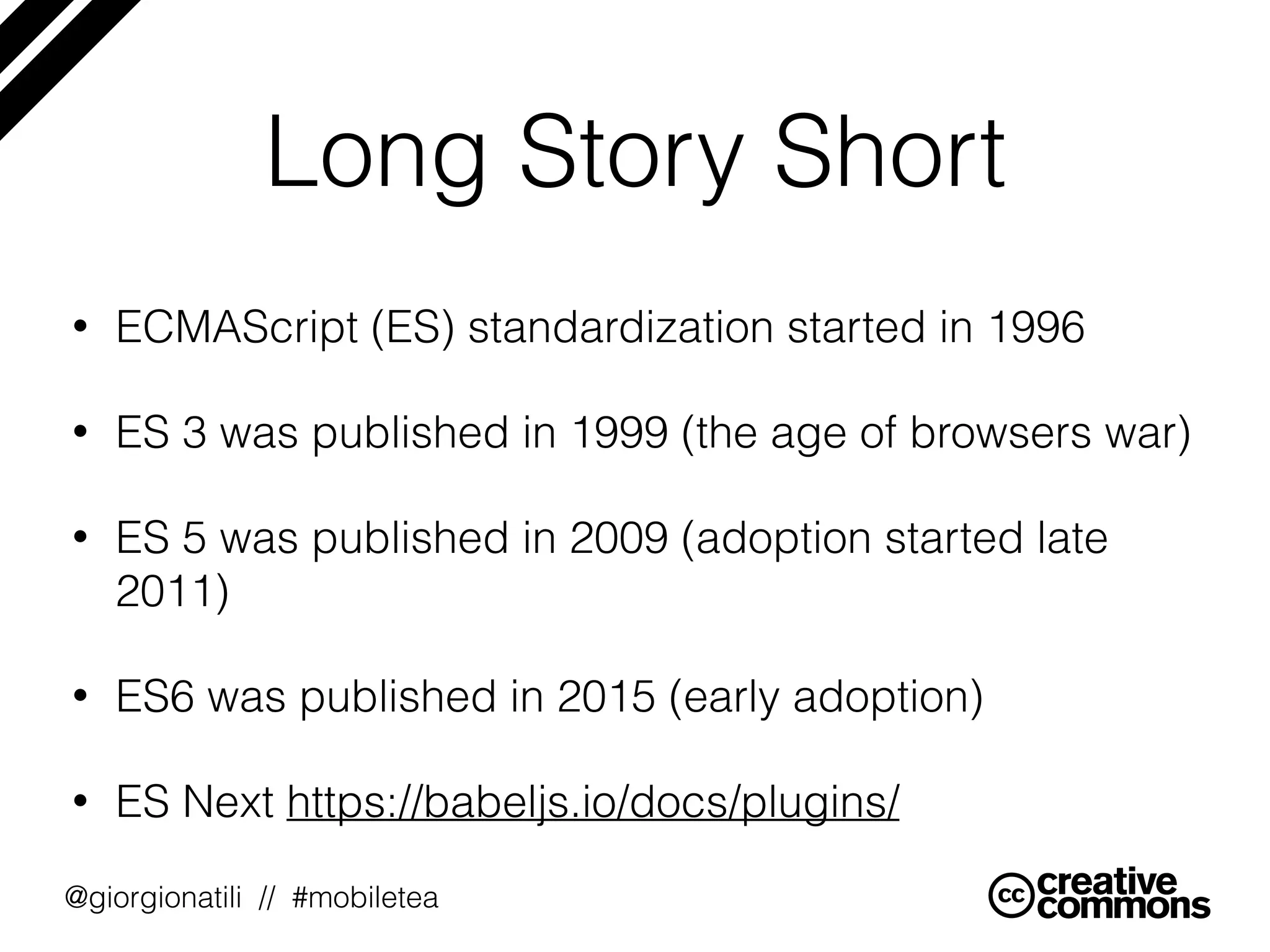
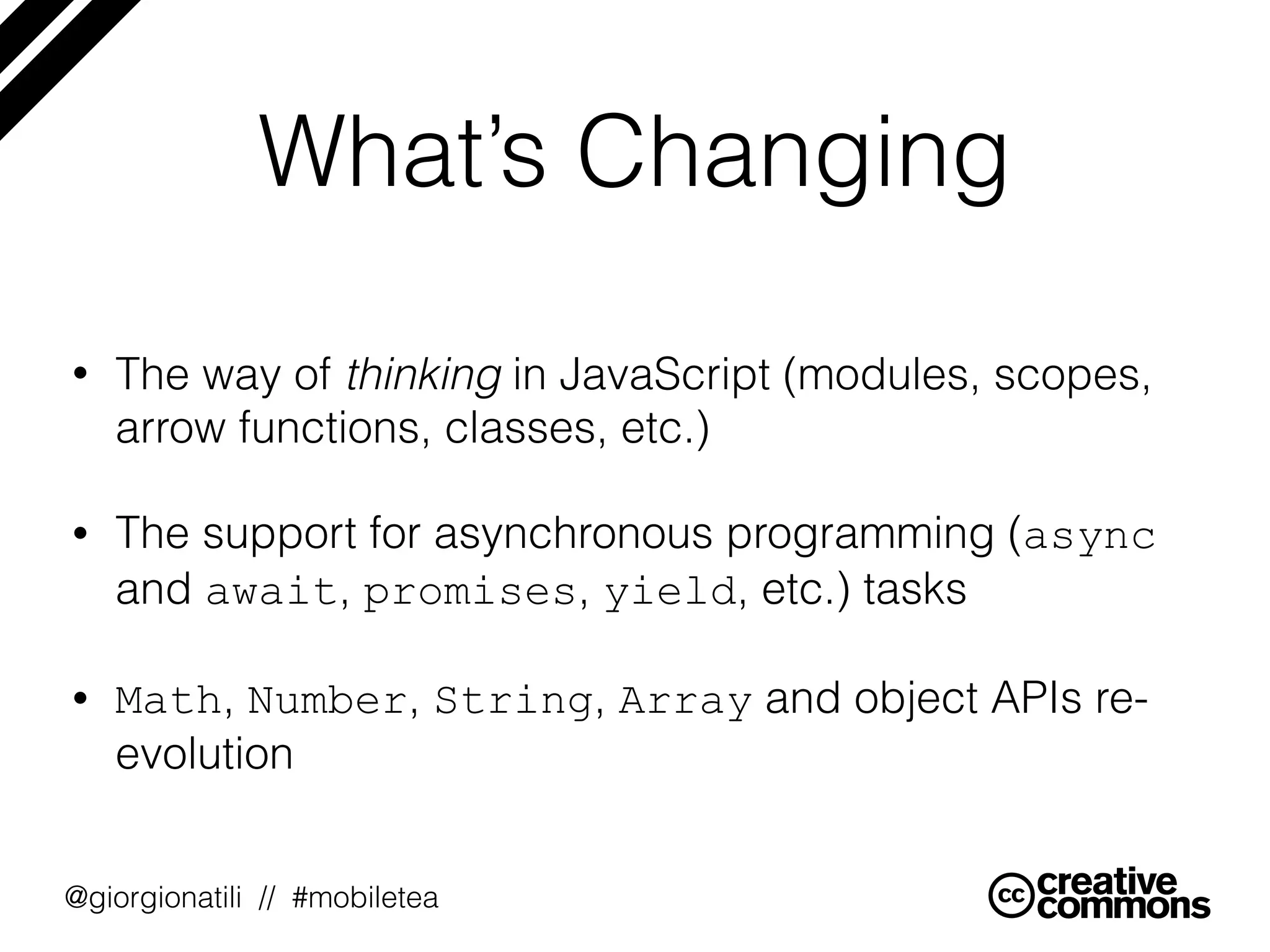
![@giorgionatili // #mobiletea
Array & Arrow Functions
Array.from(document.querySelectorAll('*')) // Returns a real Array
Array.of(1, 2, 3) // Similar to new Array(…),
[0, 0, 0].fill(7, 1) // [0,7,7]
[1, 2, 3].find(x => x == 3) // 3
[1, 2, 3].findIndex(x => x == 2) // 1
[1, 2, 3, 4, 5].copyWithin(3, 0) // [1, 2, 3, 1, 2]
["a", "b", "c"].entries() // iterator [0, "a"], [1,"b"], [2,"c"]
["a", "b", "c"].keys() // iterator 0, 1, 2
["a", "b", "c"].values() // iterator "a", "b", "c"](https://image.slidesharecdn.com/codemotion2016-160329152548/75/Reactive-Programming-with-JavaScript-14-2048.jpg)
![@giorgionatili // #mobiletea
Classes & Inheritance
// Pseudo-code of Array
class Array {
constructor(...args) { /* ... */ }
static [Symbol.create]() {
// Install special [[DefineOwnProperty]]
// to magically update 'length'
}
}
// User code of Array subclass
class MyArray extends Array {
constructor(...args) { super(...args); }
}](https://image.slidesharecdn.com/codemotion2016-160329152548/75/Reactive-Programming-with-JavaScript-15-2048.jpg)
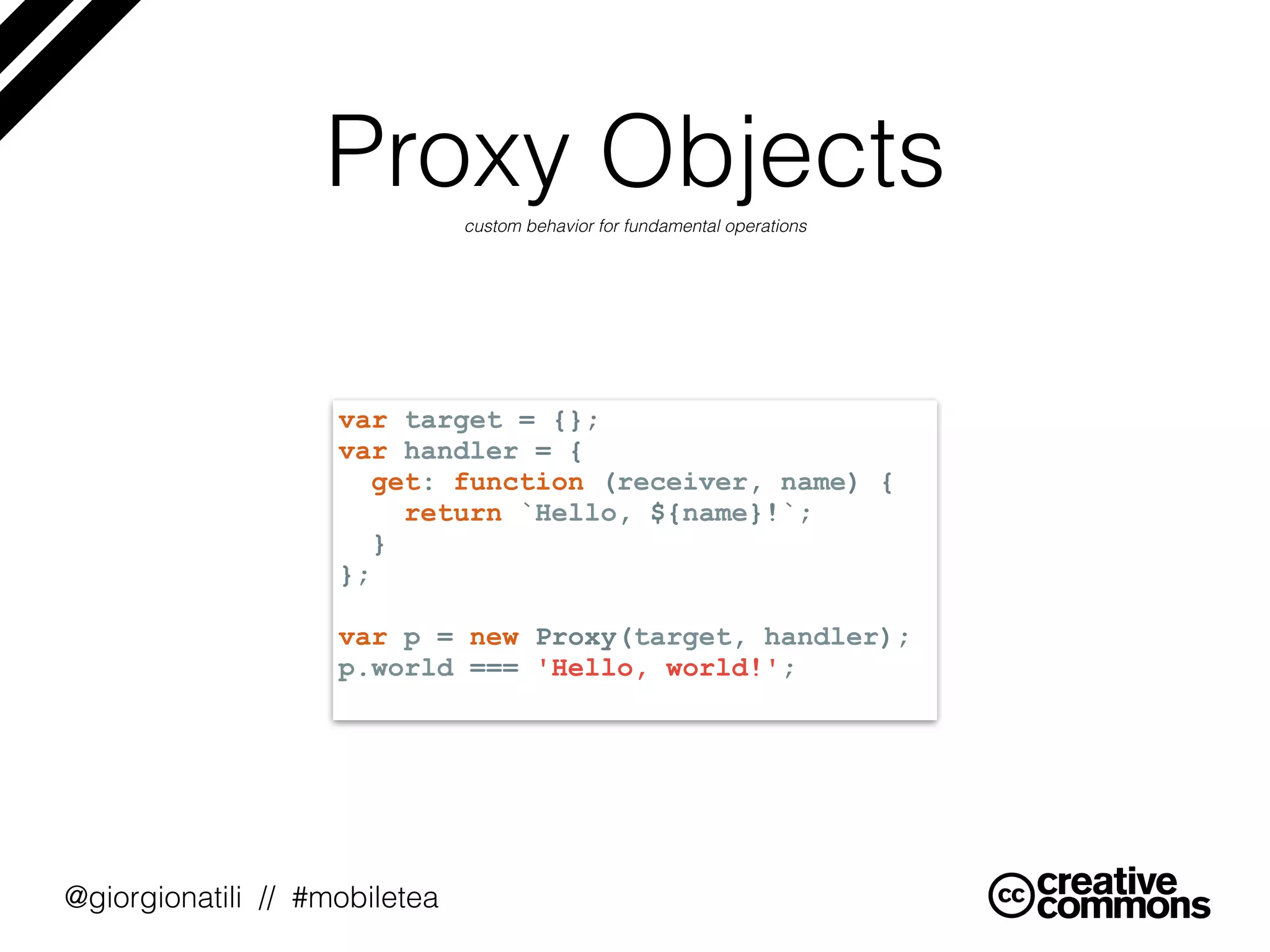
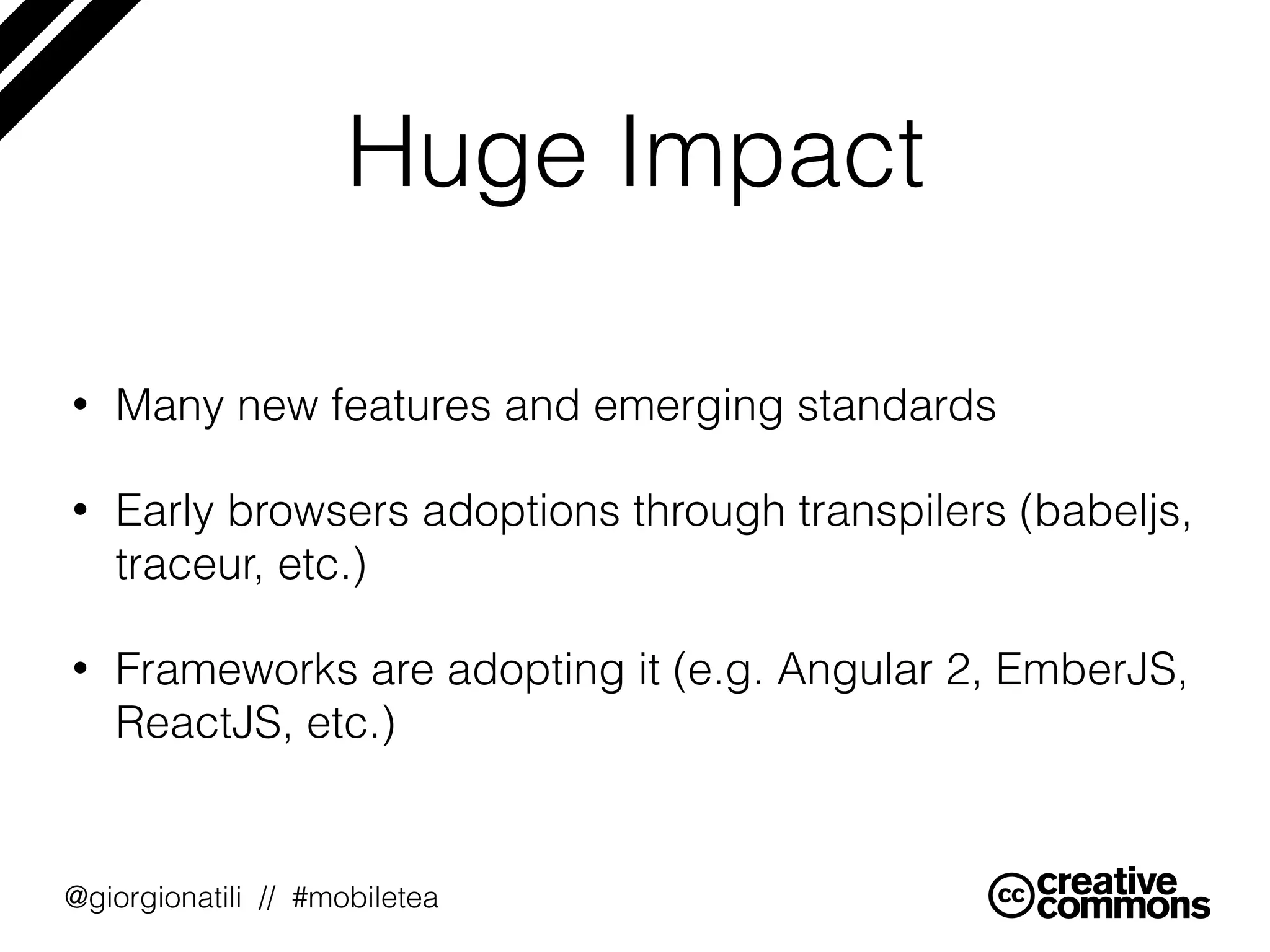

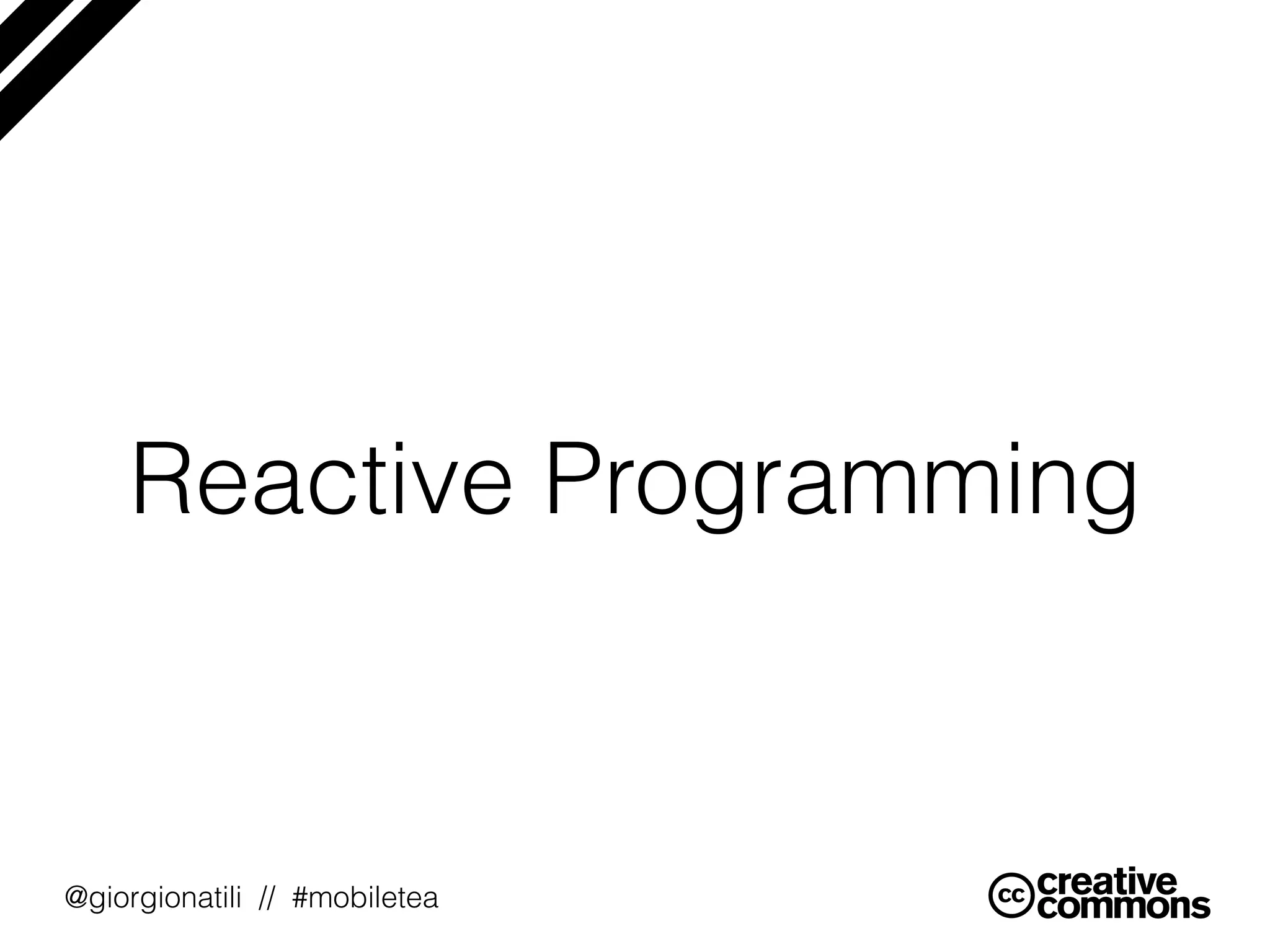
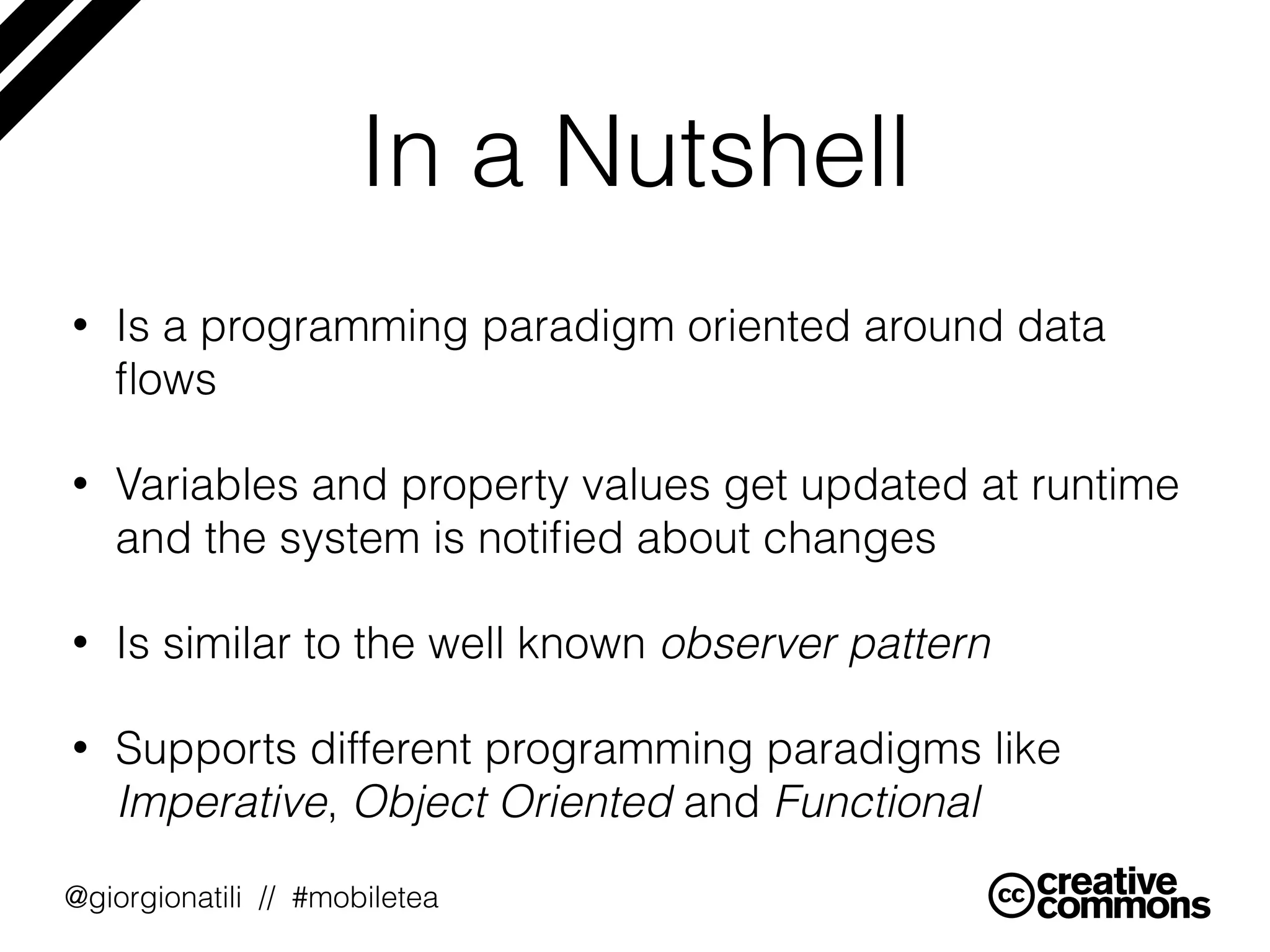
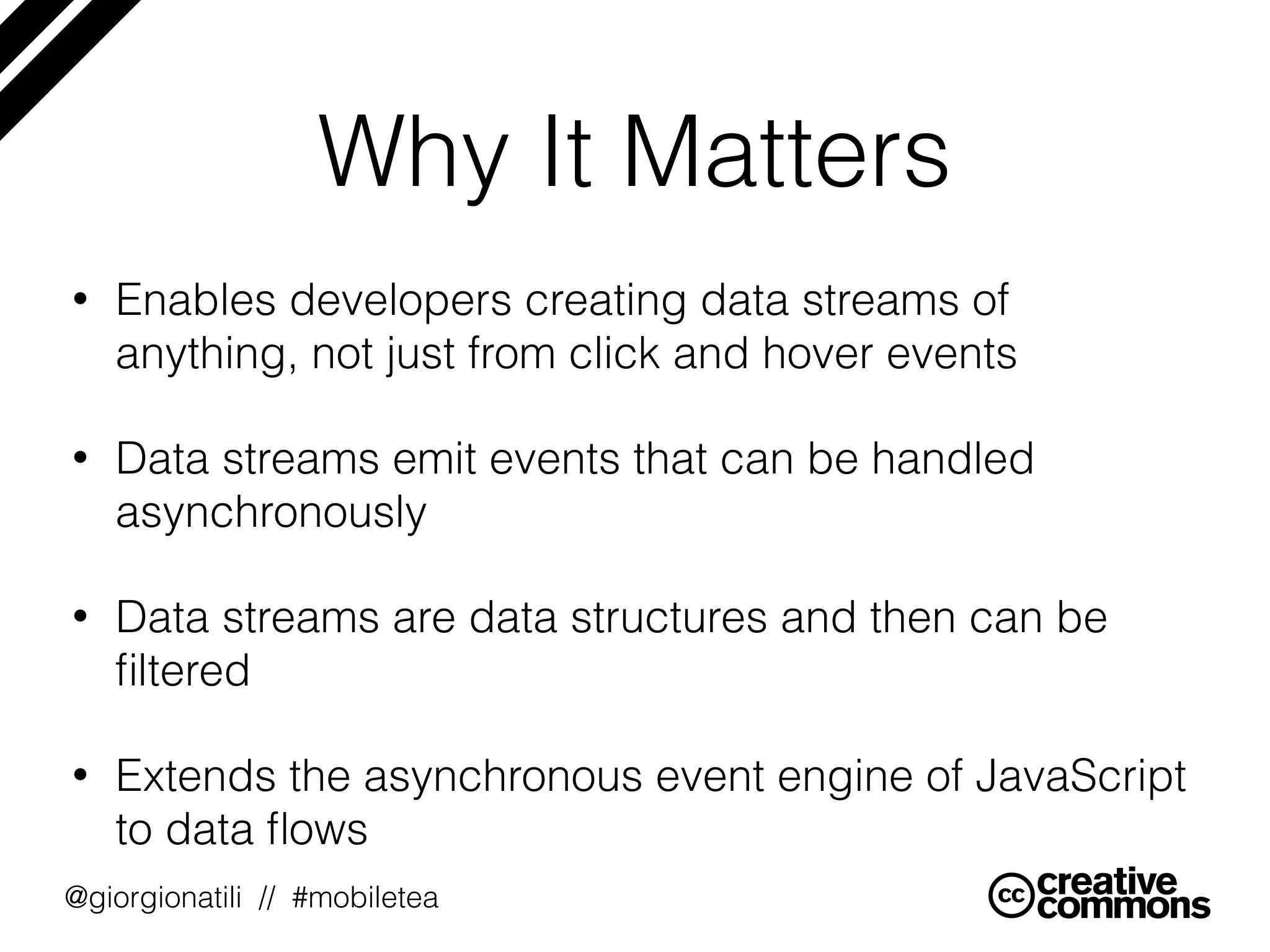
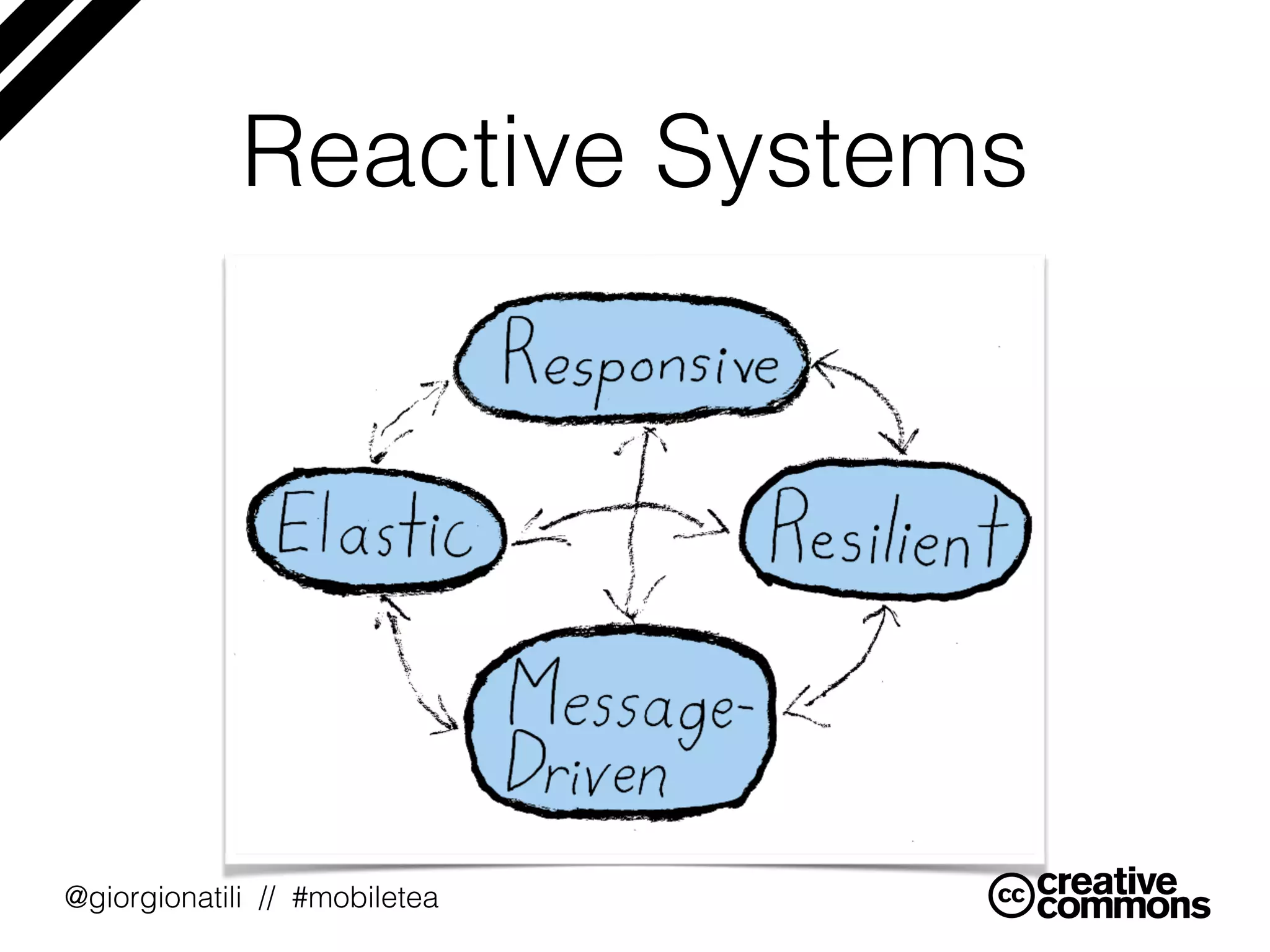
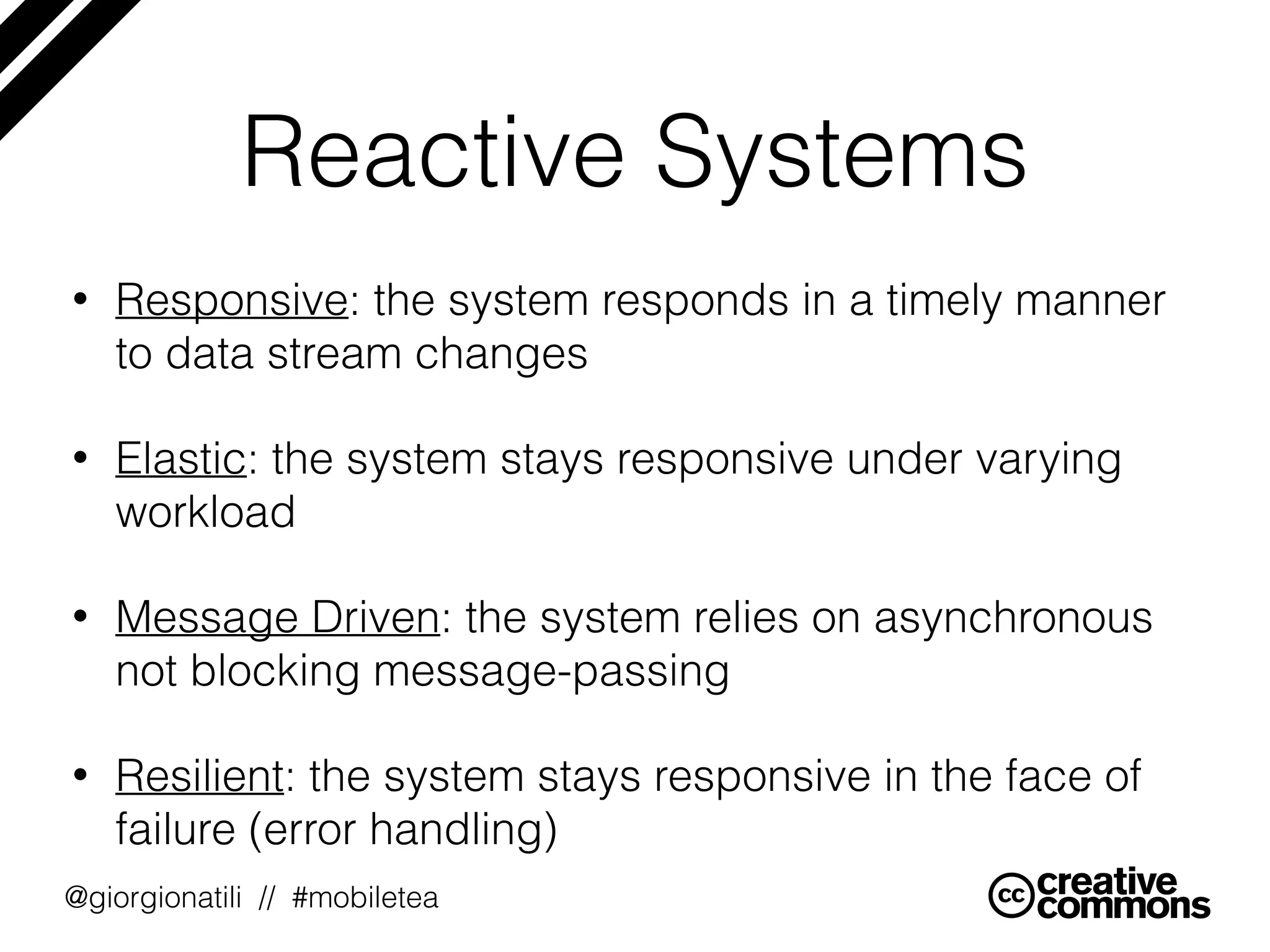
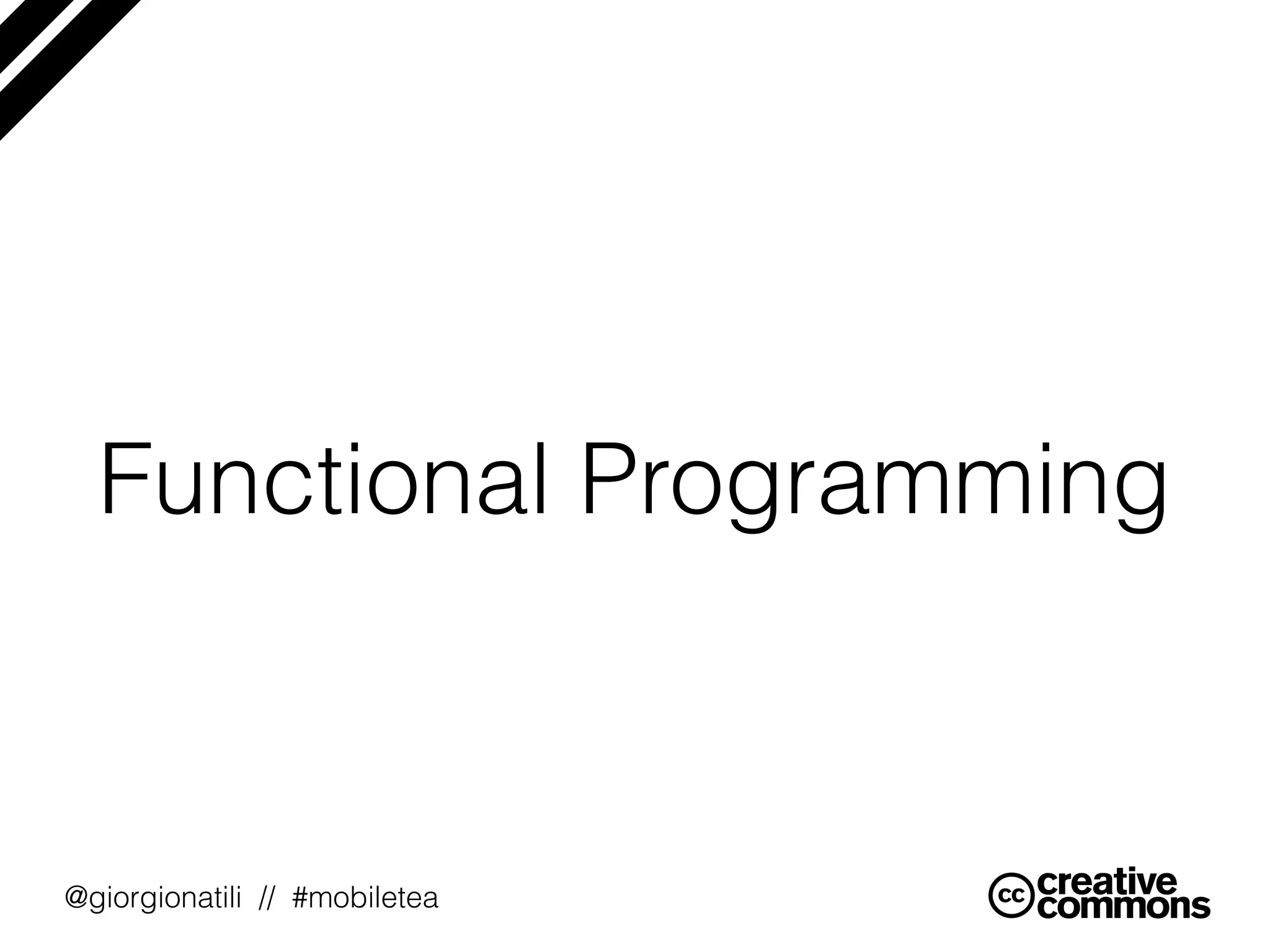
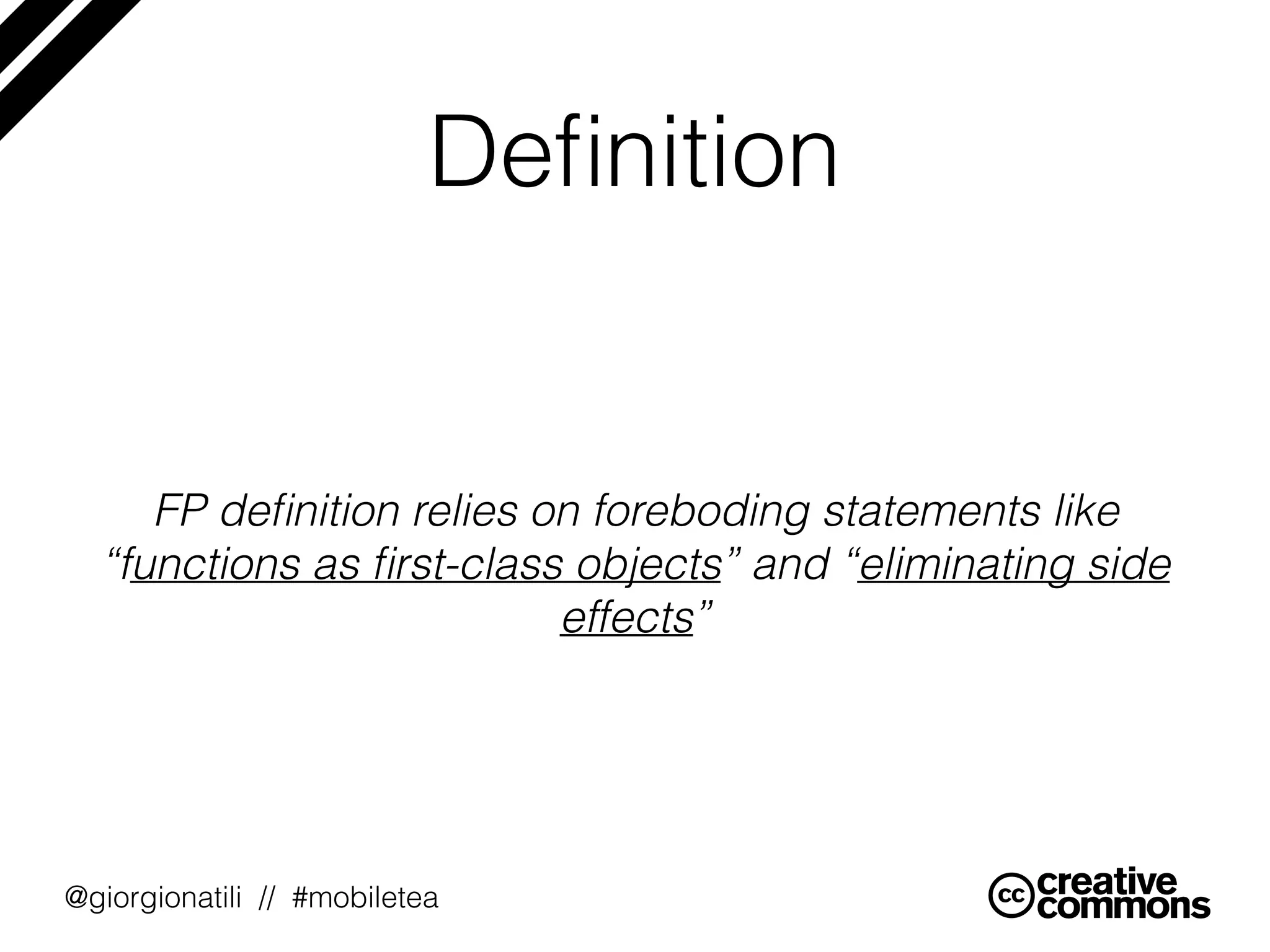
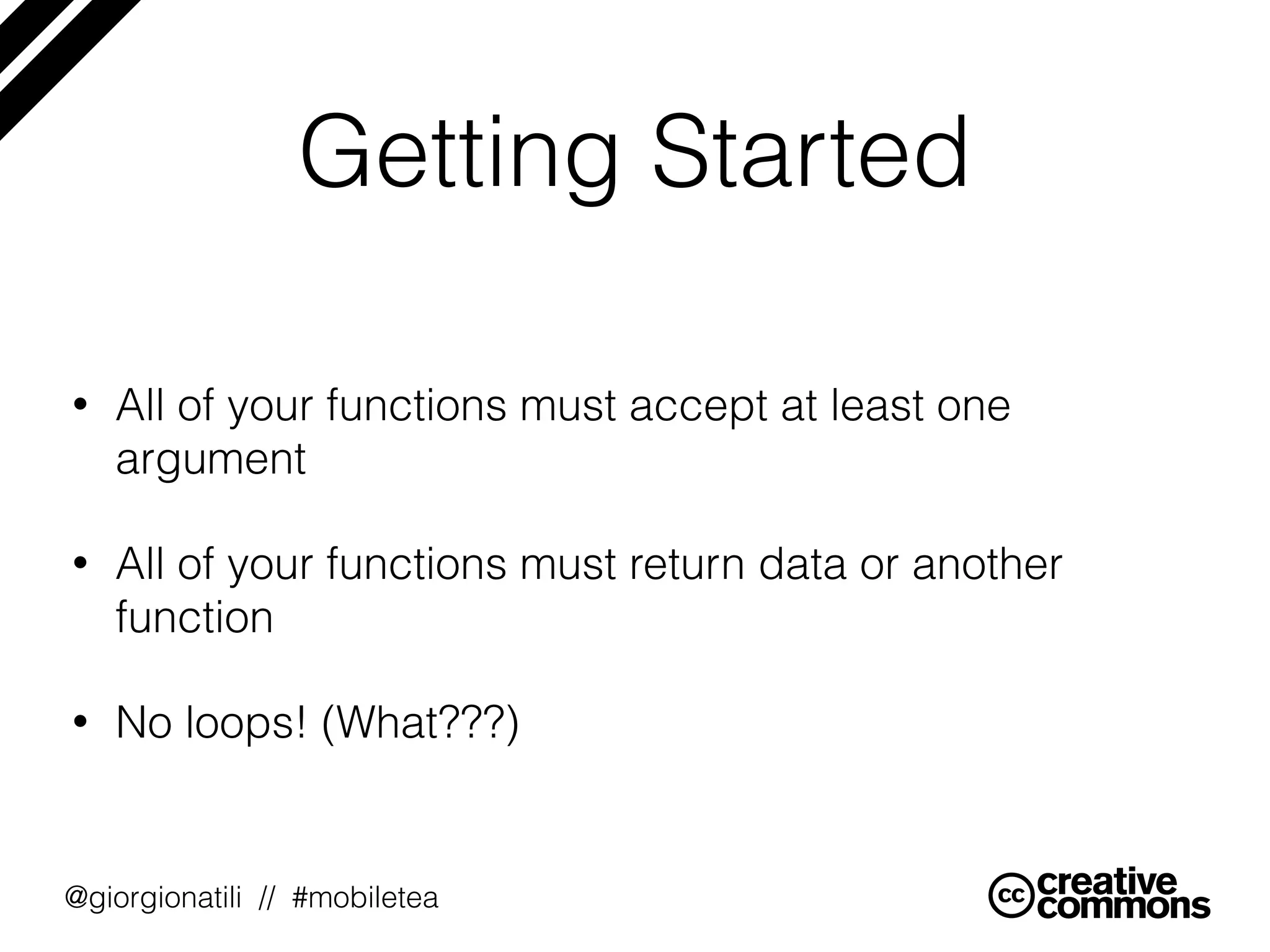
![@giorgionatili // #mobiletea
In Practice
function totalForArray(currentTotal, arr) {
currentTotal += arr[0];
// I am not using Array.shift on because
// we're treating arrays as immutable.
var remainingList = arr.slice(1);
// This function calls itself with the remainder of the list, and the
// current value of the currentTotal variable
if(remainingList.length > 0) {
return totalForArray(currentTotal, remainingList);
}
// Unless the list is empty, in which case we return
// the currentTotal value
else {
return currentTotal;
}
}](https://image.slidesharecdn.com/codemotion2016-160329152548/75/Reactive-Programming-with-JavaScript-27-2048.jpg)
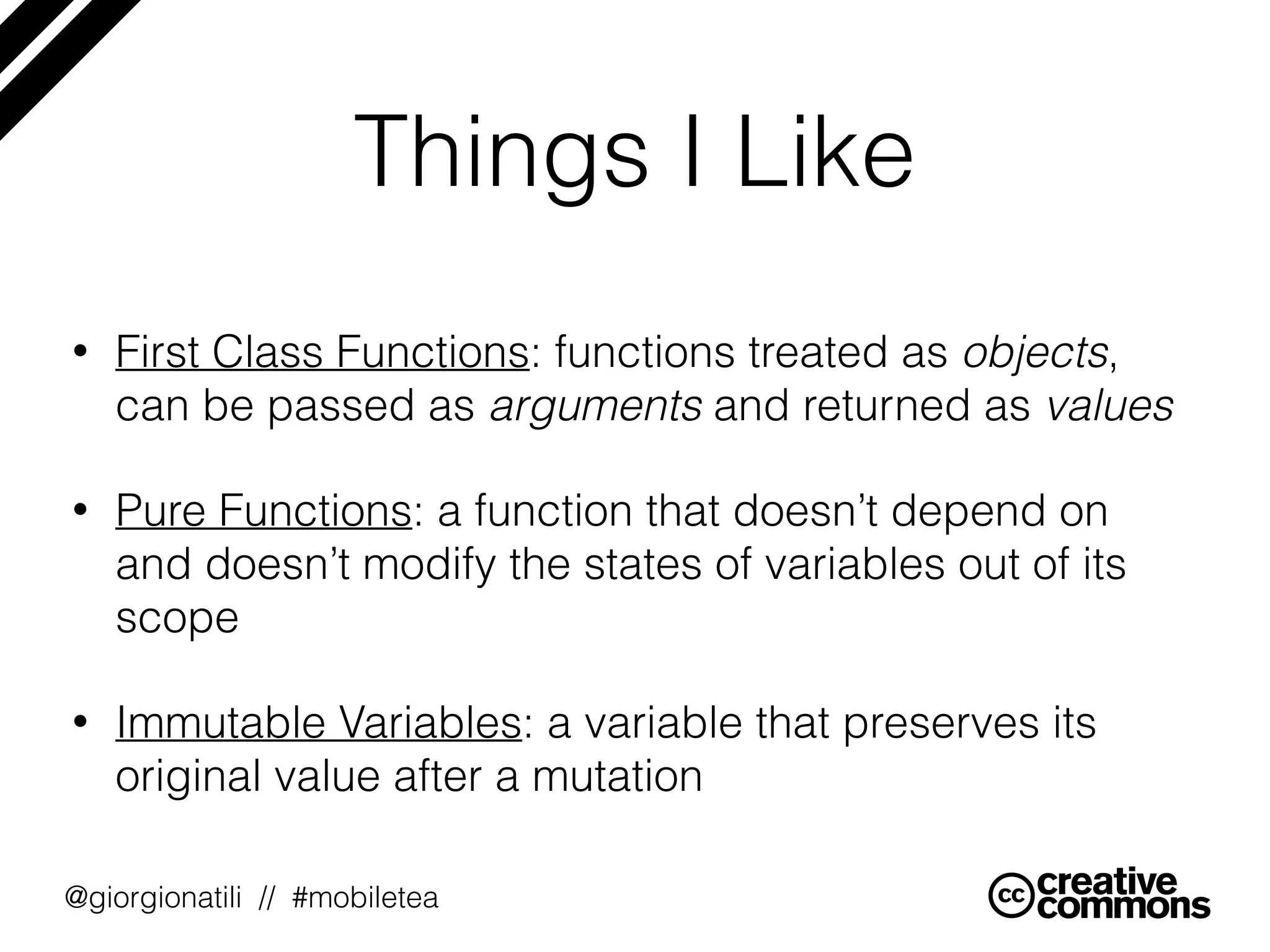
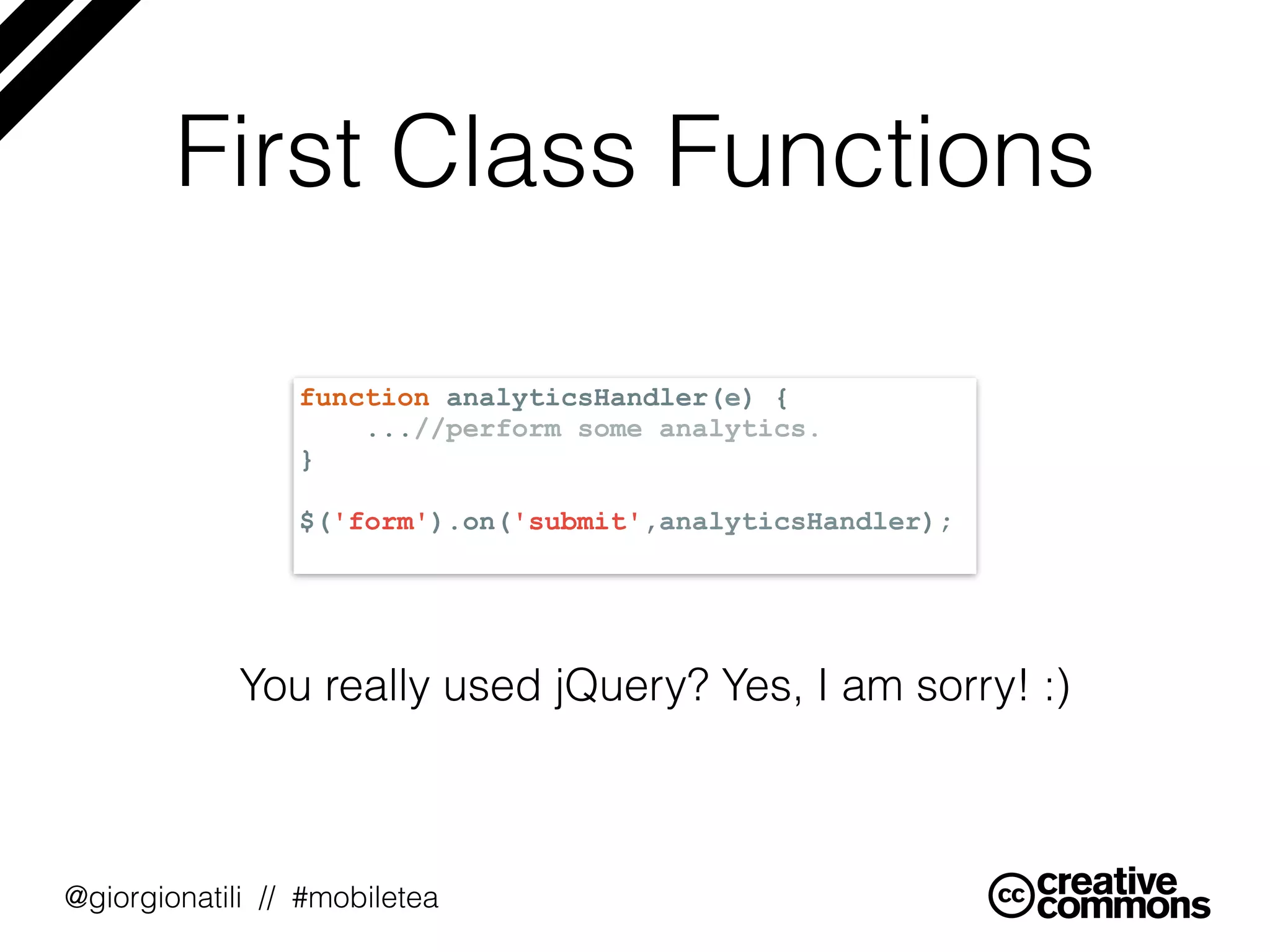
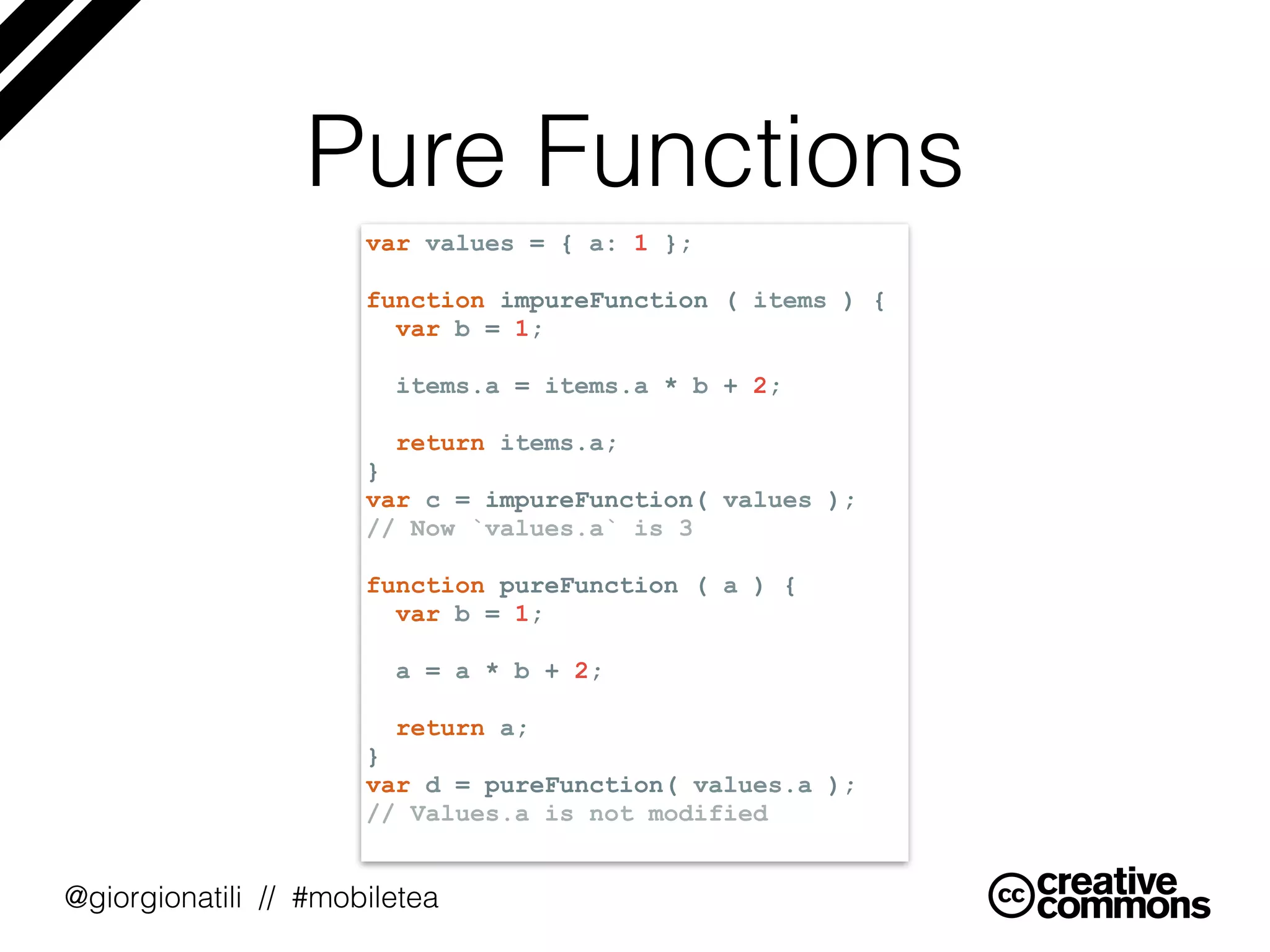
![@giorgionatili // #mobiletea
Immutable Variables
var arr = new ImmutableArray([1, 2, 3, 4]);
var v2 = arr.push(5);
arr.toArray(); // [1, 2, 3, 4]
v2.toArray(); // [1, 2, 3, 4, 5]](https://image.slidesharecdn.com/codemotion2016-160329152548/75/Reactive-Programming-with-JavaScript-31-2048.jpg)
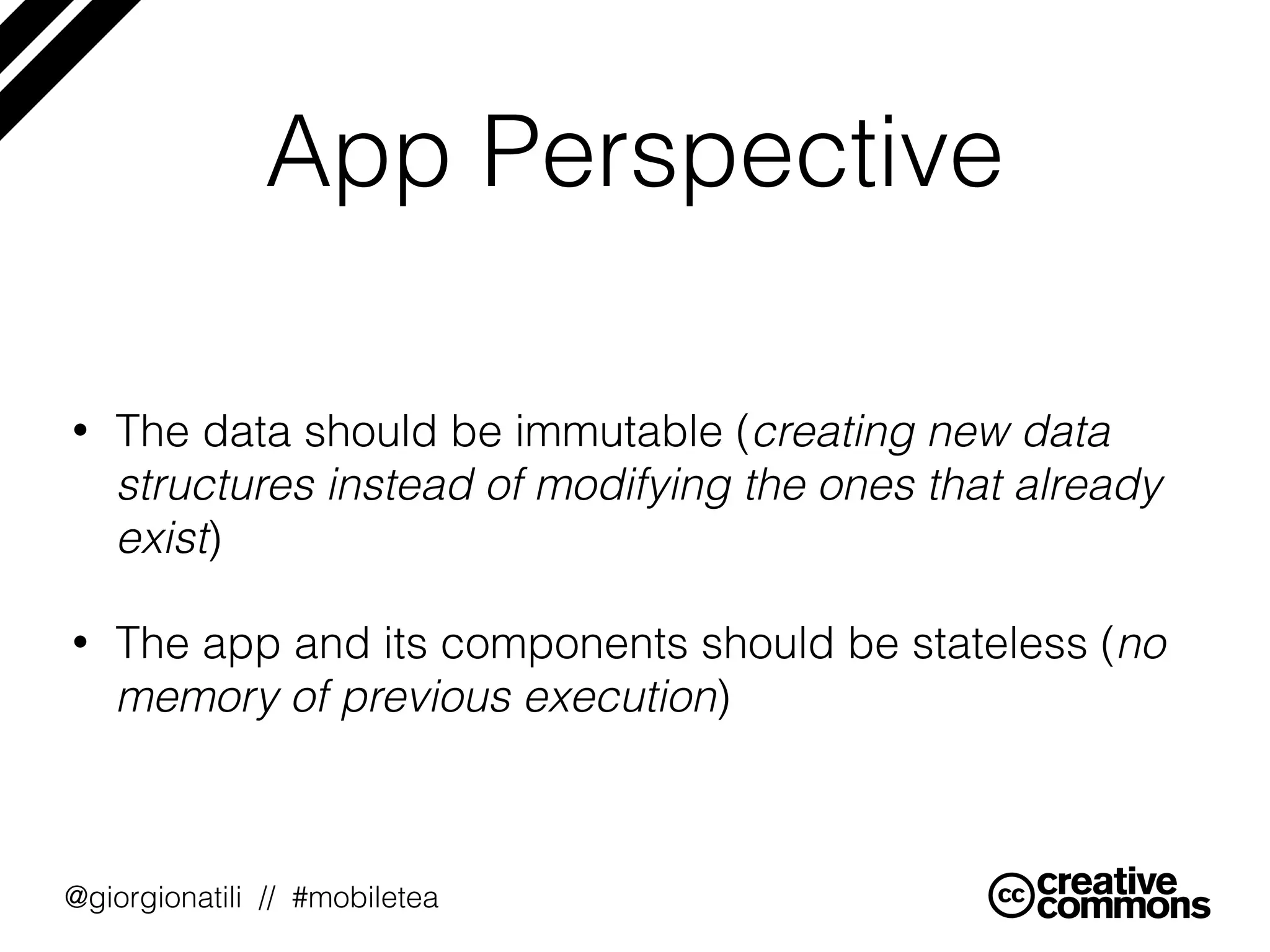
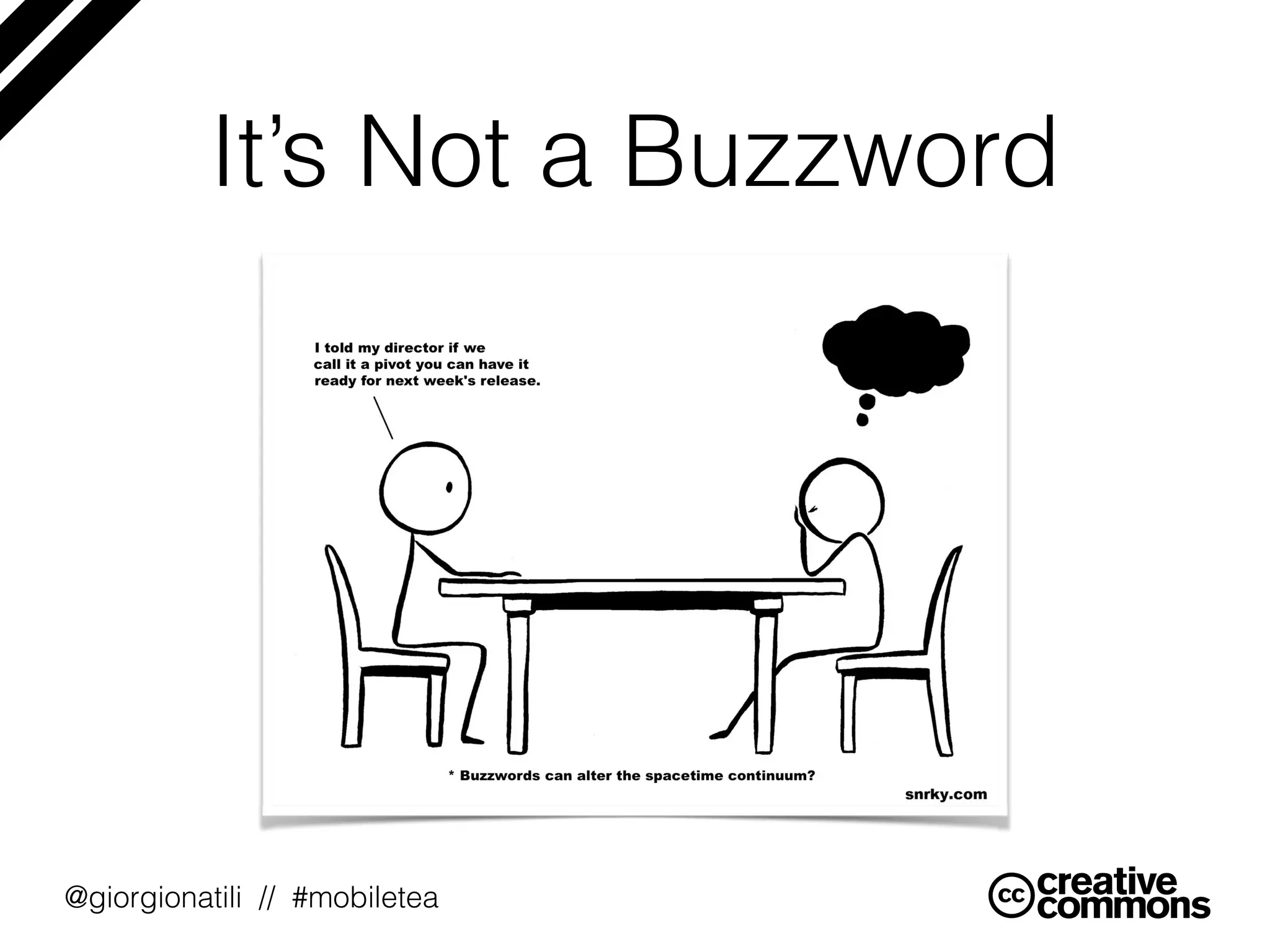
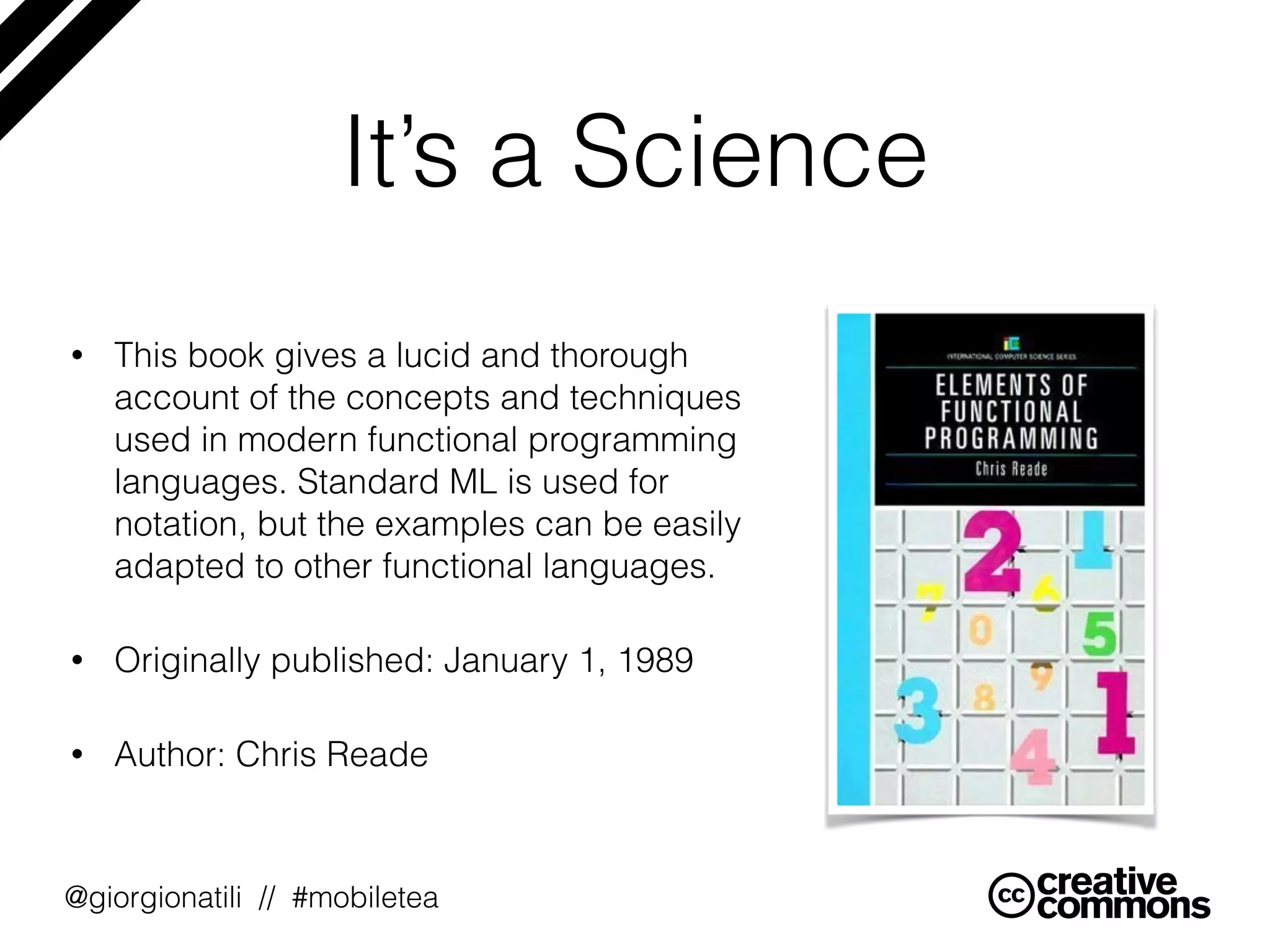
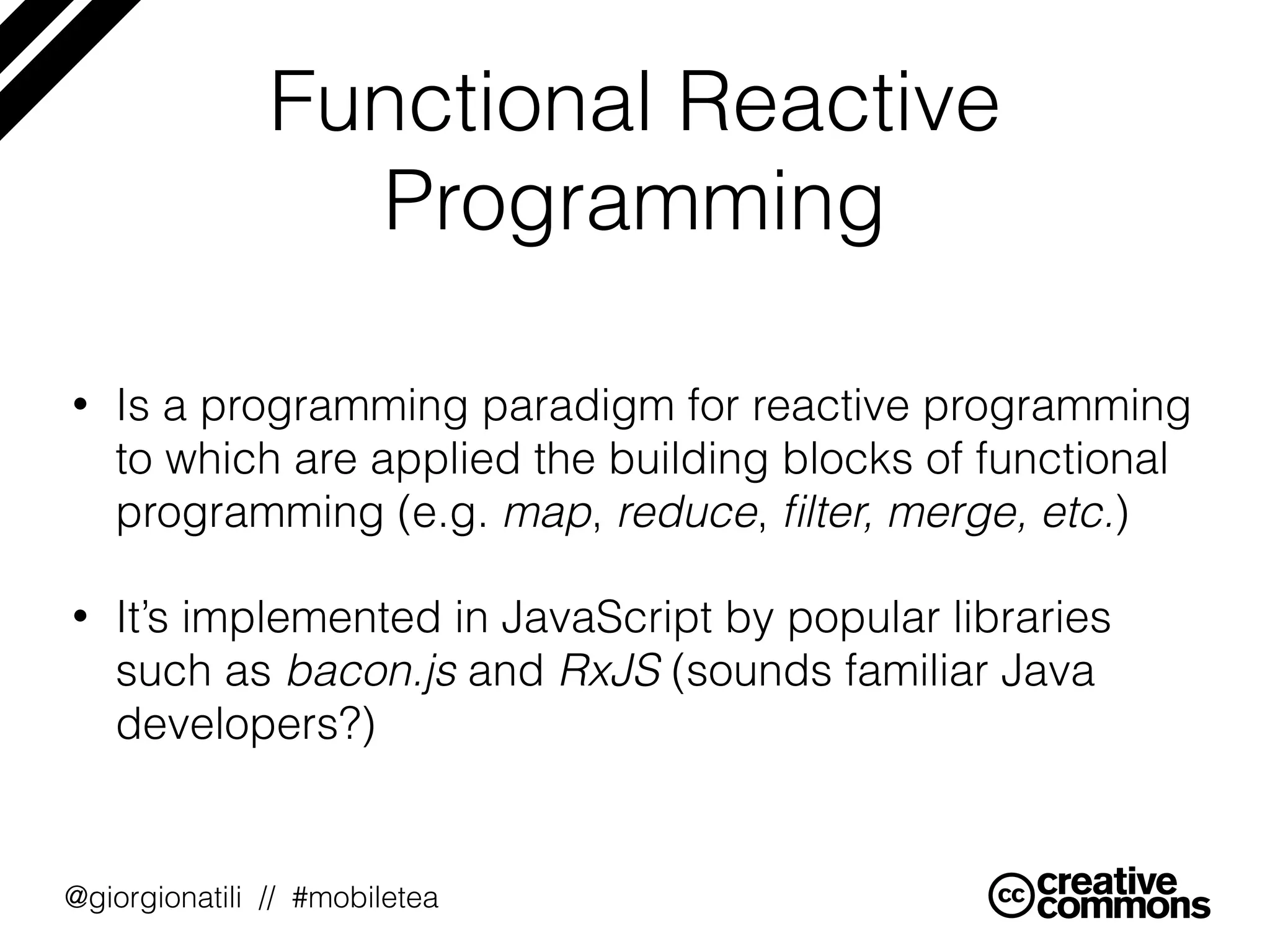
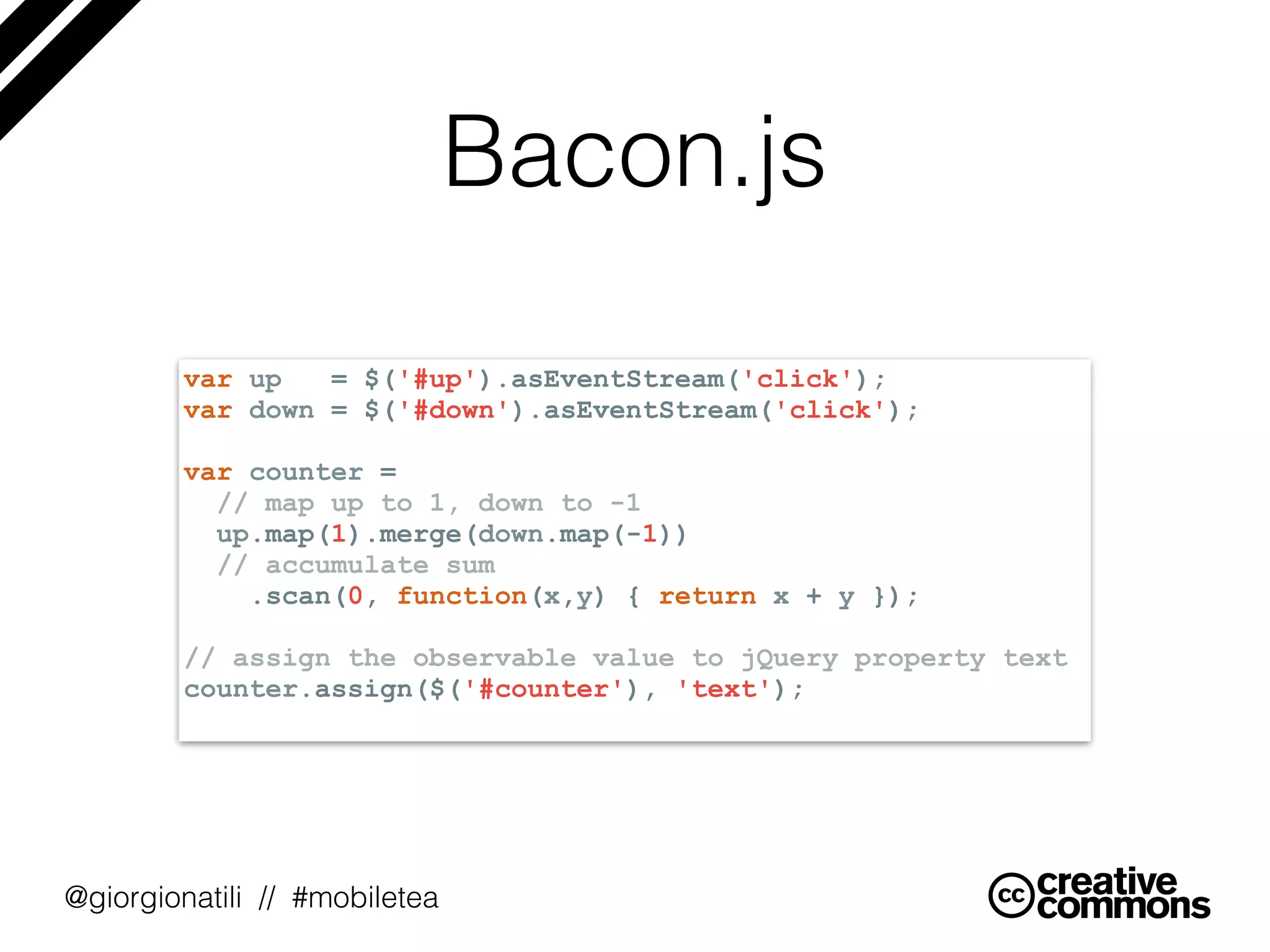
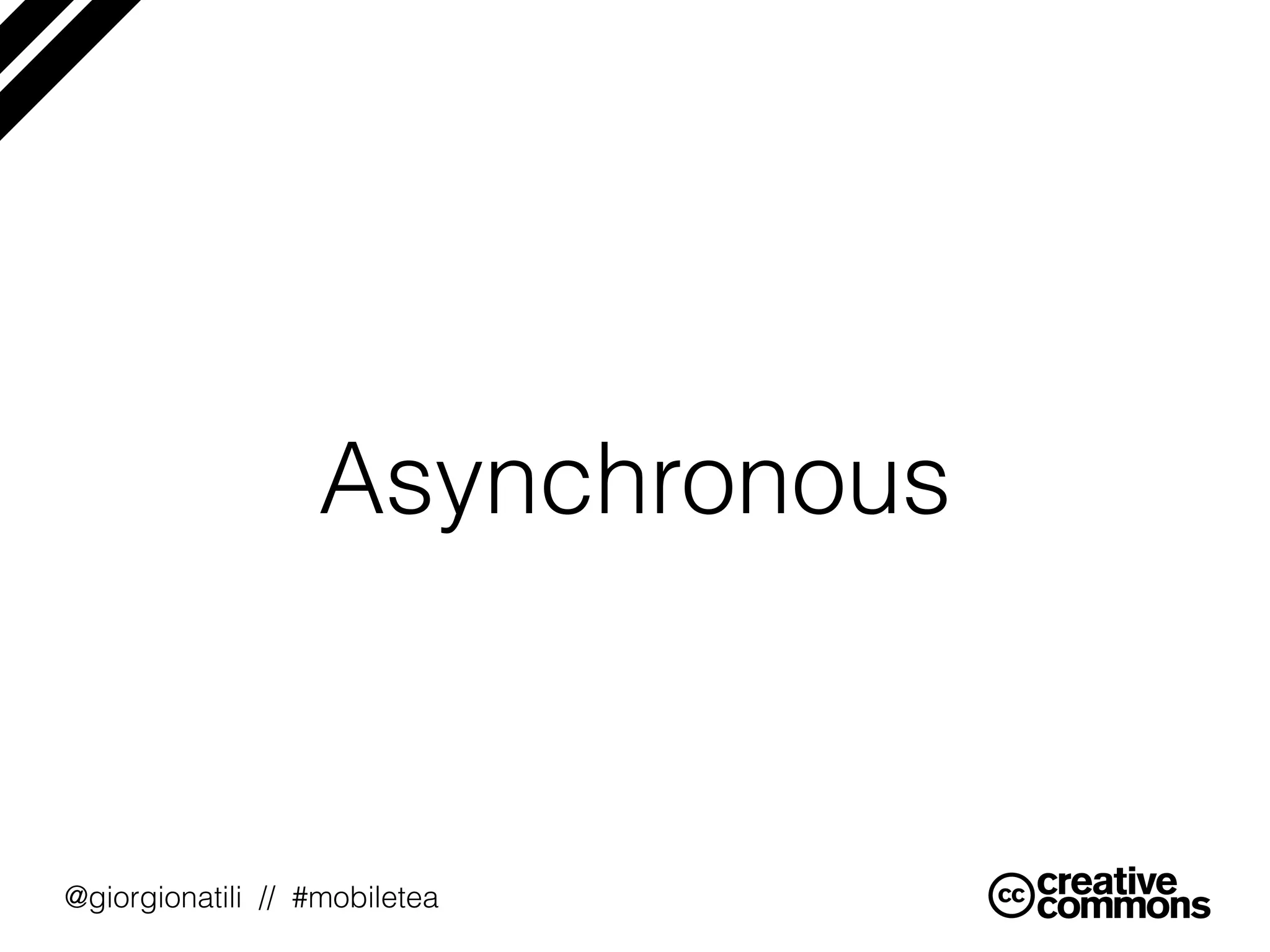
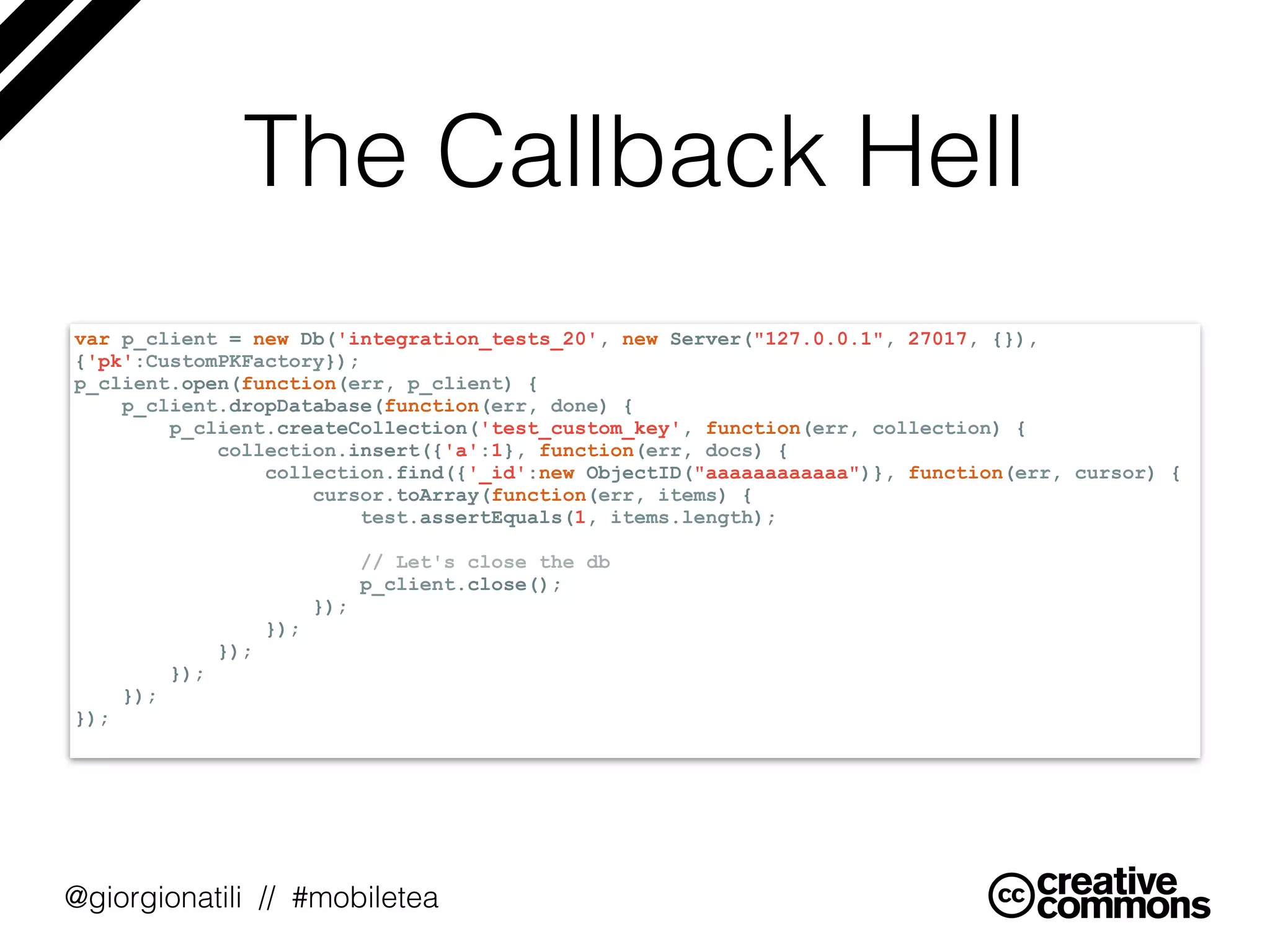
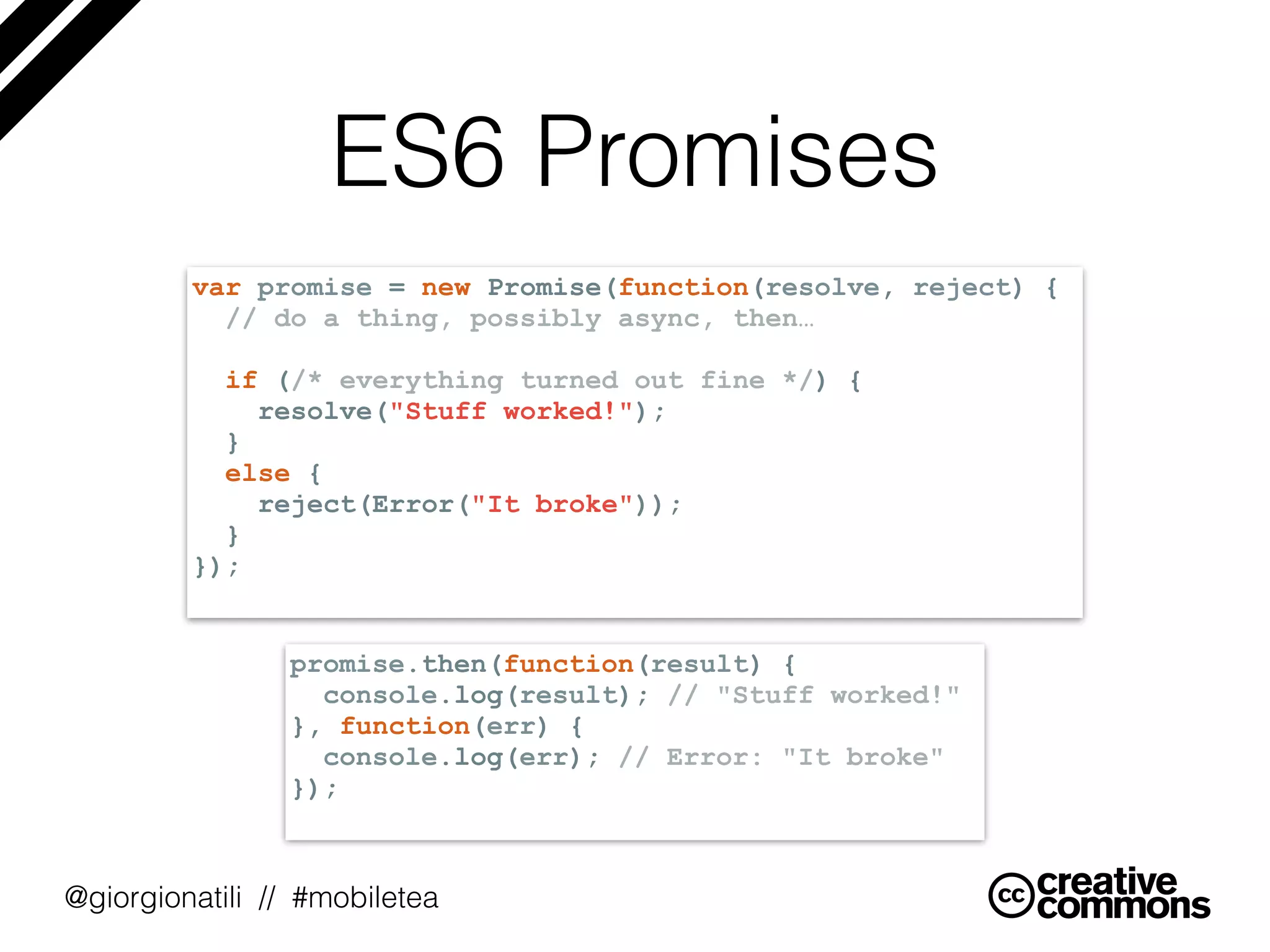
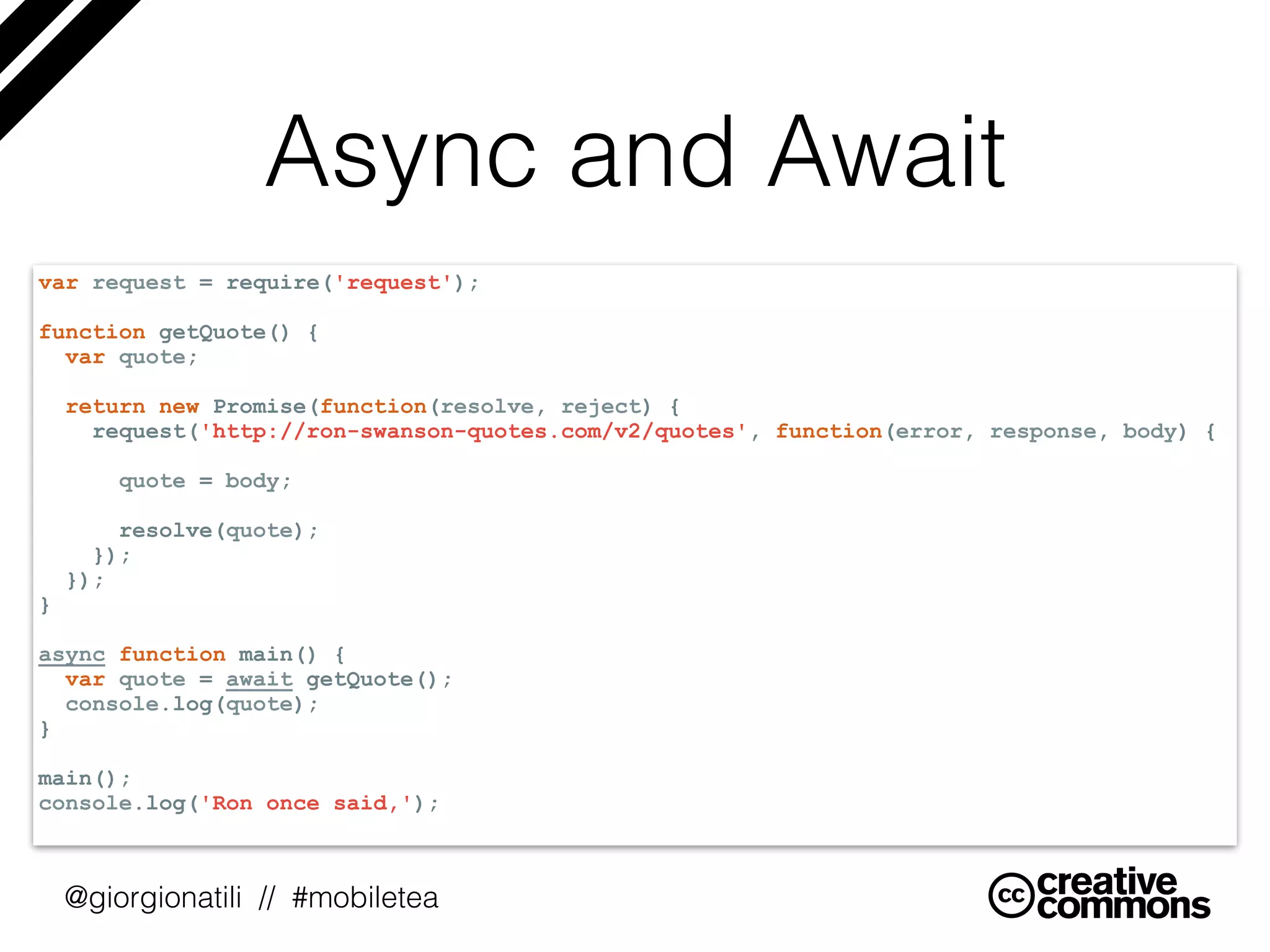
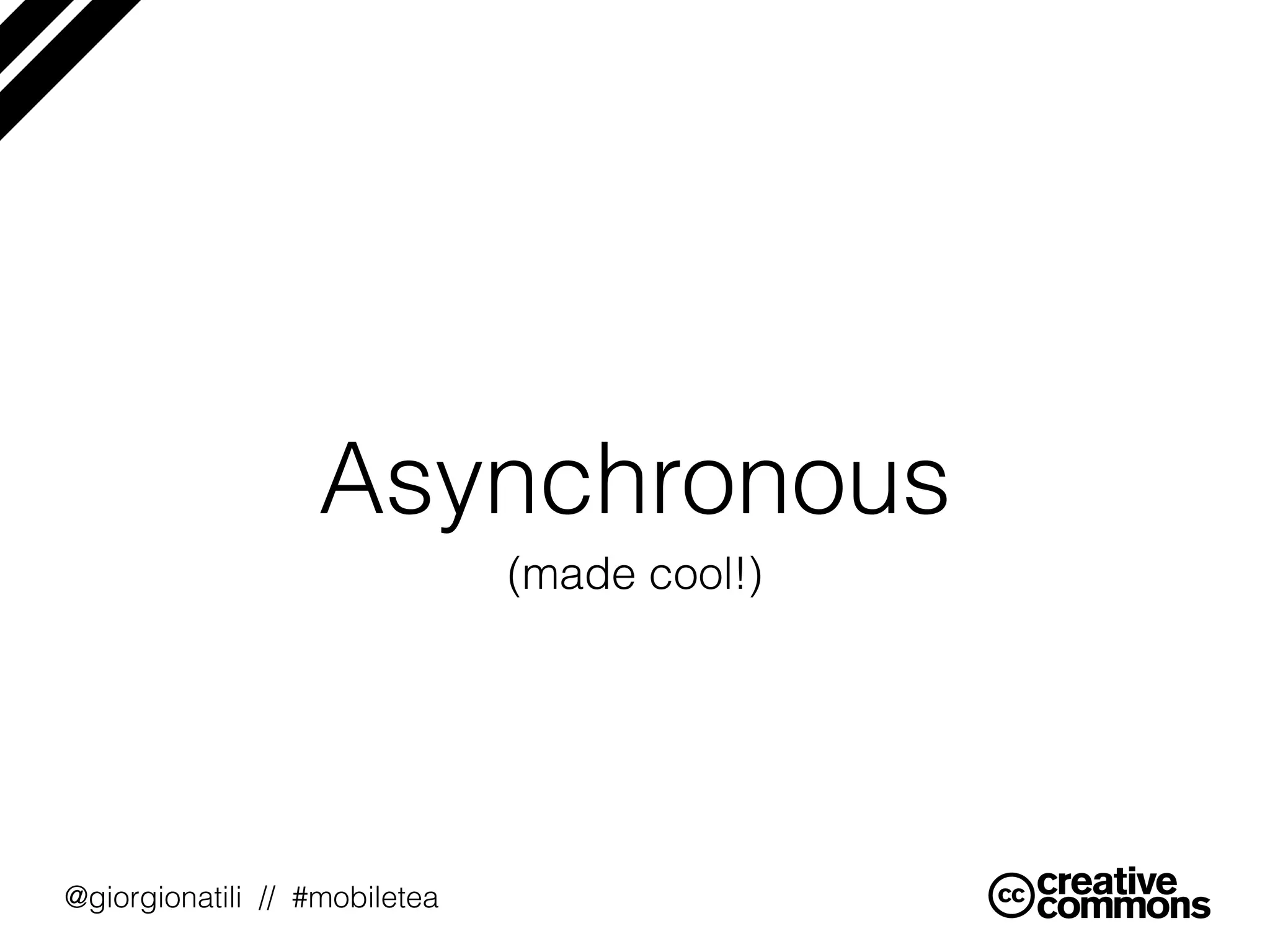
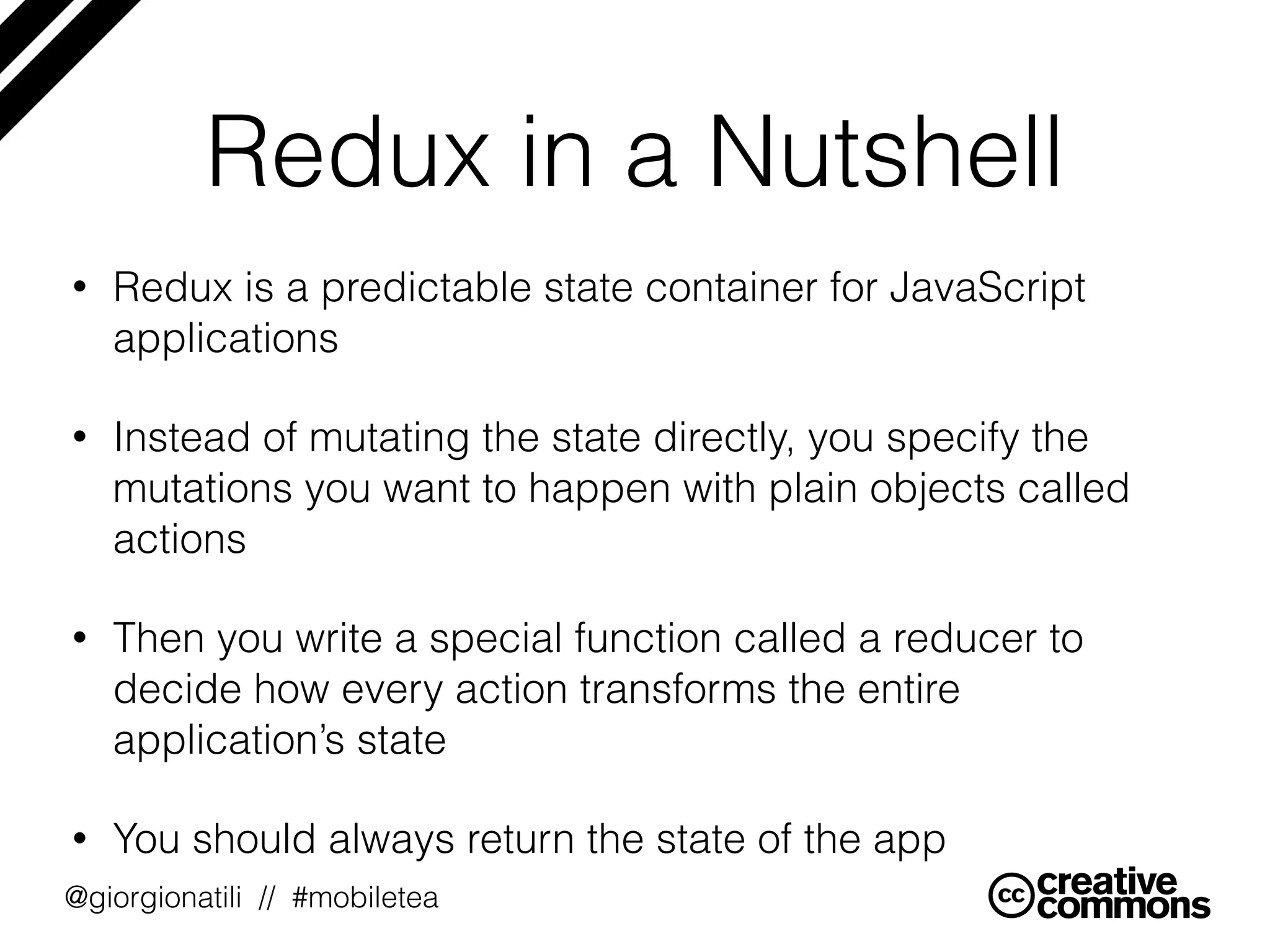
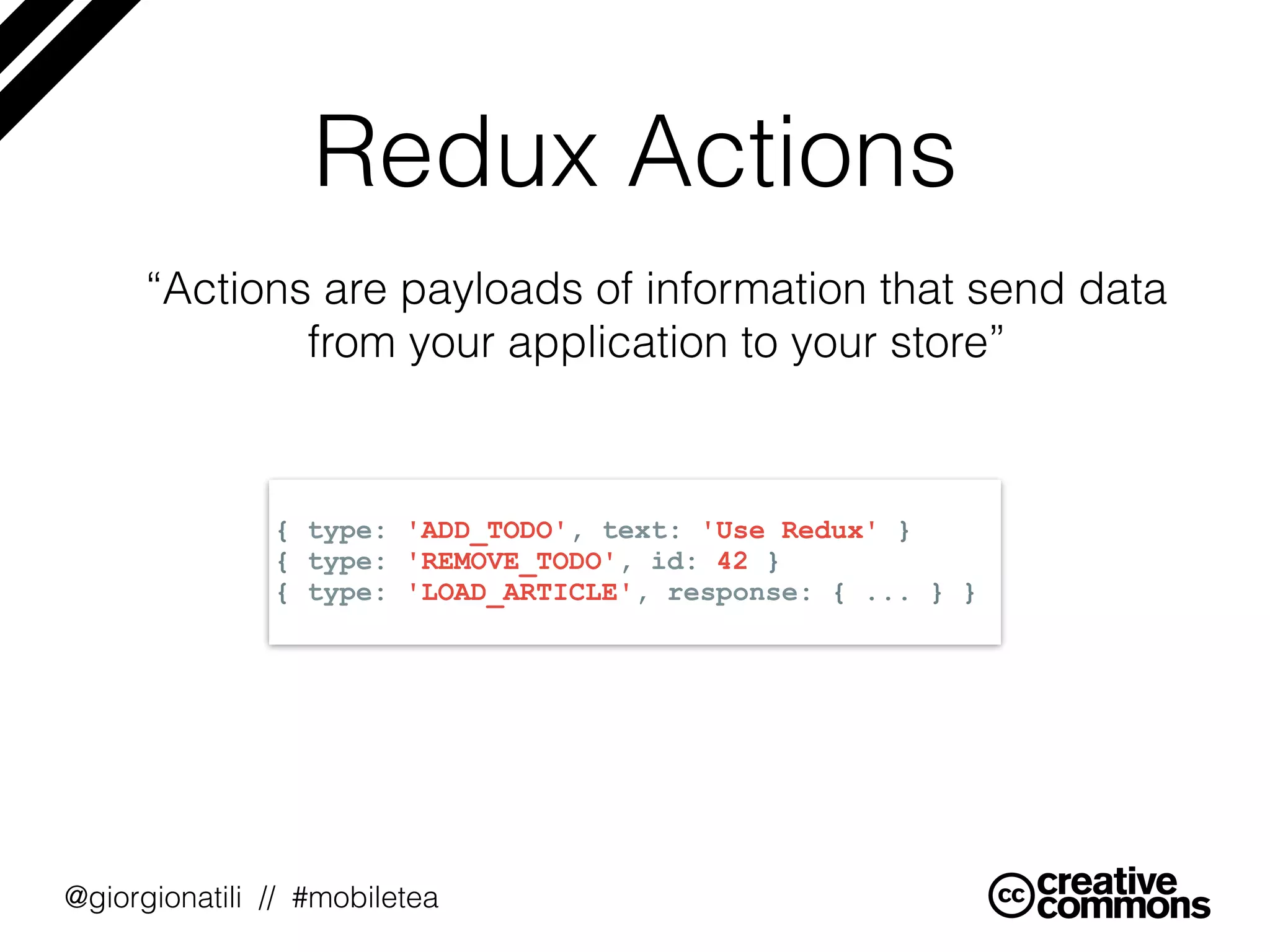
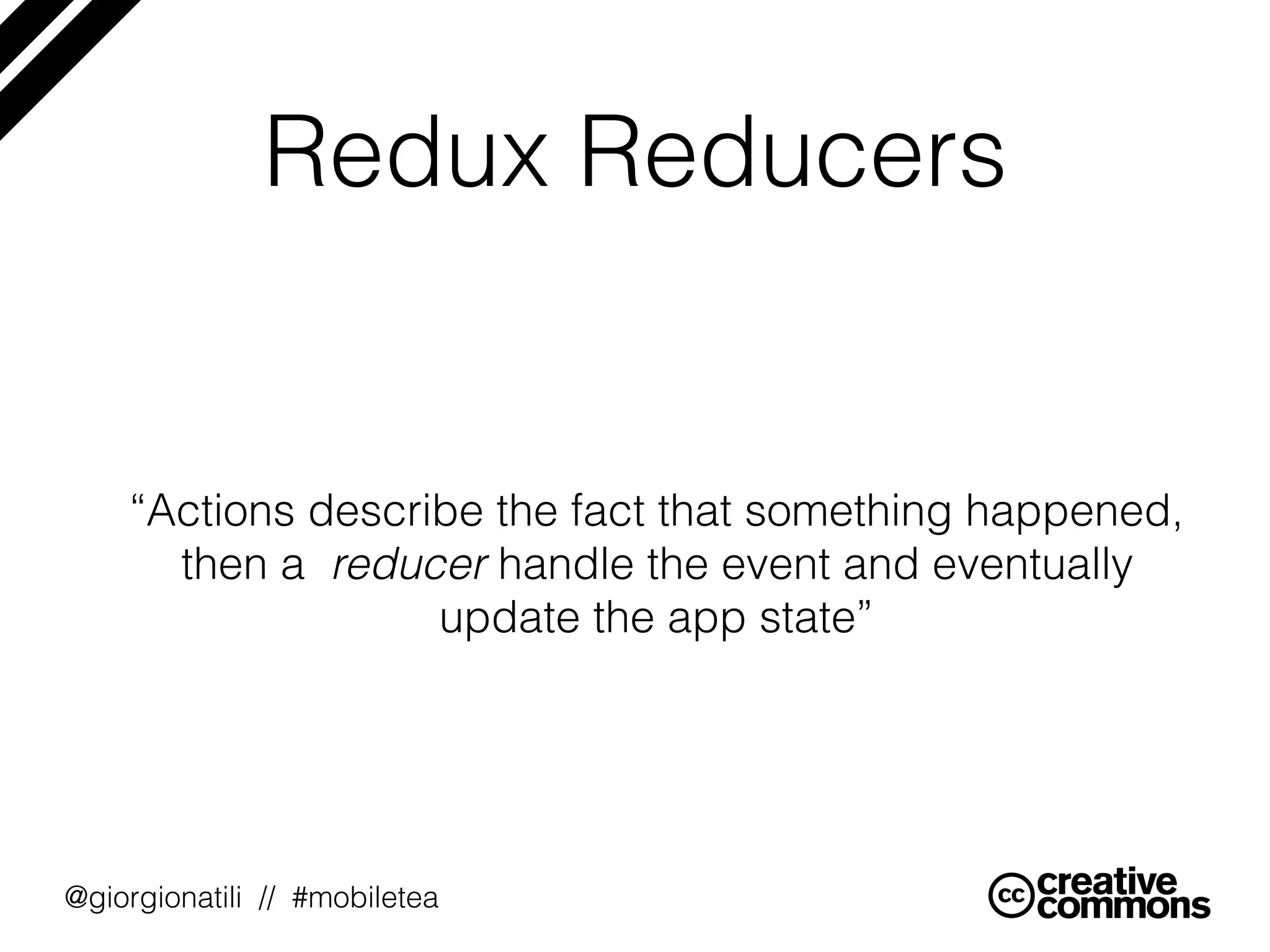
![@giorgionatili // #mobiletea
Redux Reducers
import * as TodoActions from './todoActions';
const initialState = {
todos: [],
currentFilter: 'SHOW_ALL'
}
export function rootReducer(state = initialState, action){
switch (action.type) {
case TodoActions.ADD_TODO:
return {
todos: state.todos.concat({
id: action.id,
text: action.text,
completed: action.completed
}),
currentFilter: state.currentFilter
};
case TodoActions.TOGGLE_TODO:
return {};
// Continue...
}
}](https://image.slidesharecdn.com/codemotion2016-160329152548/75/Reactive-Programming-with-JavaScript-45-2048.jpg)
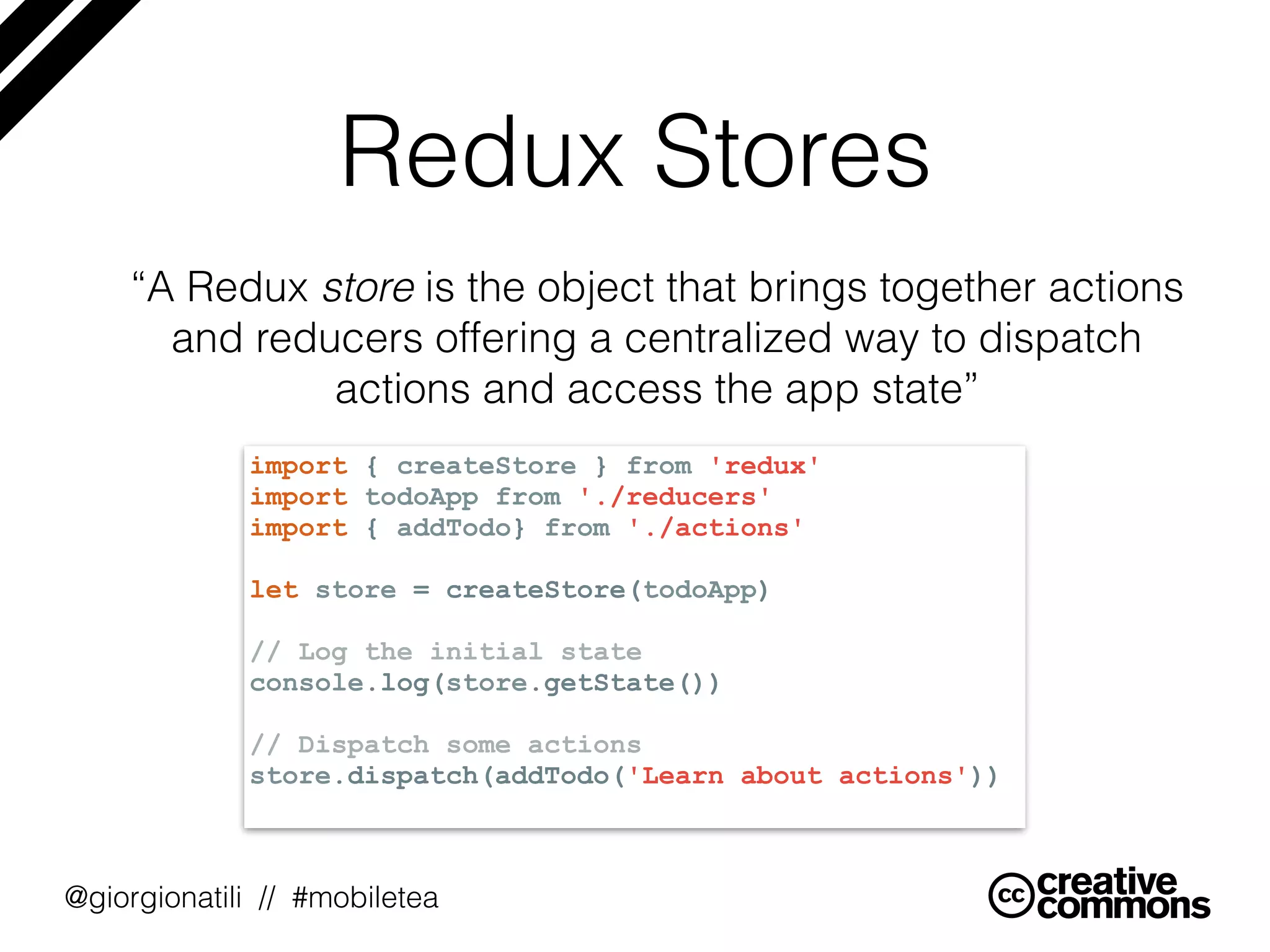
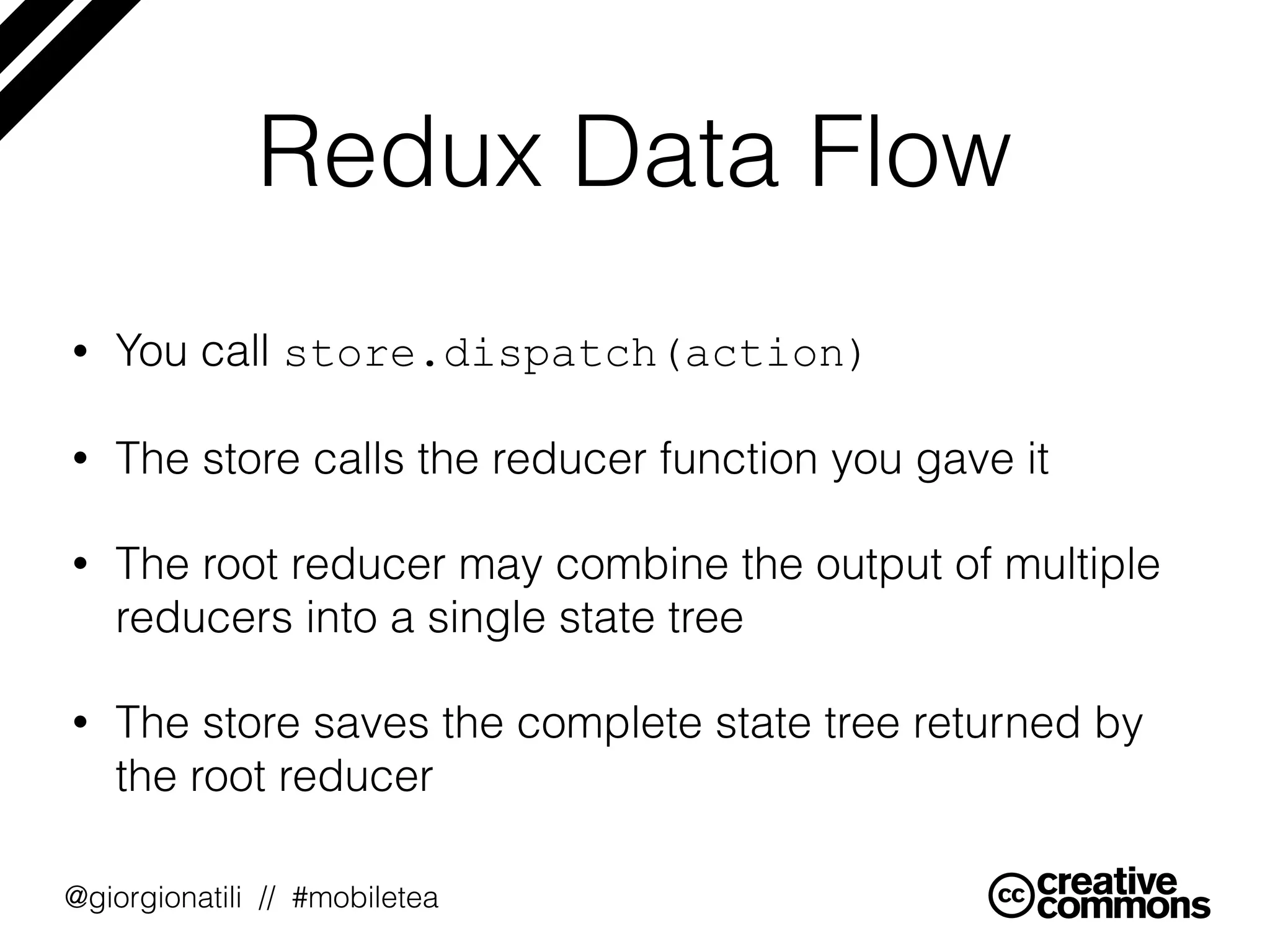

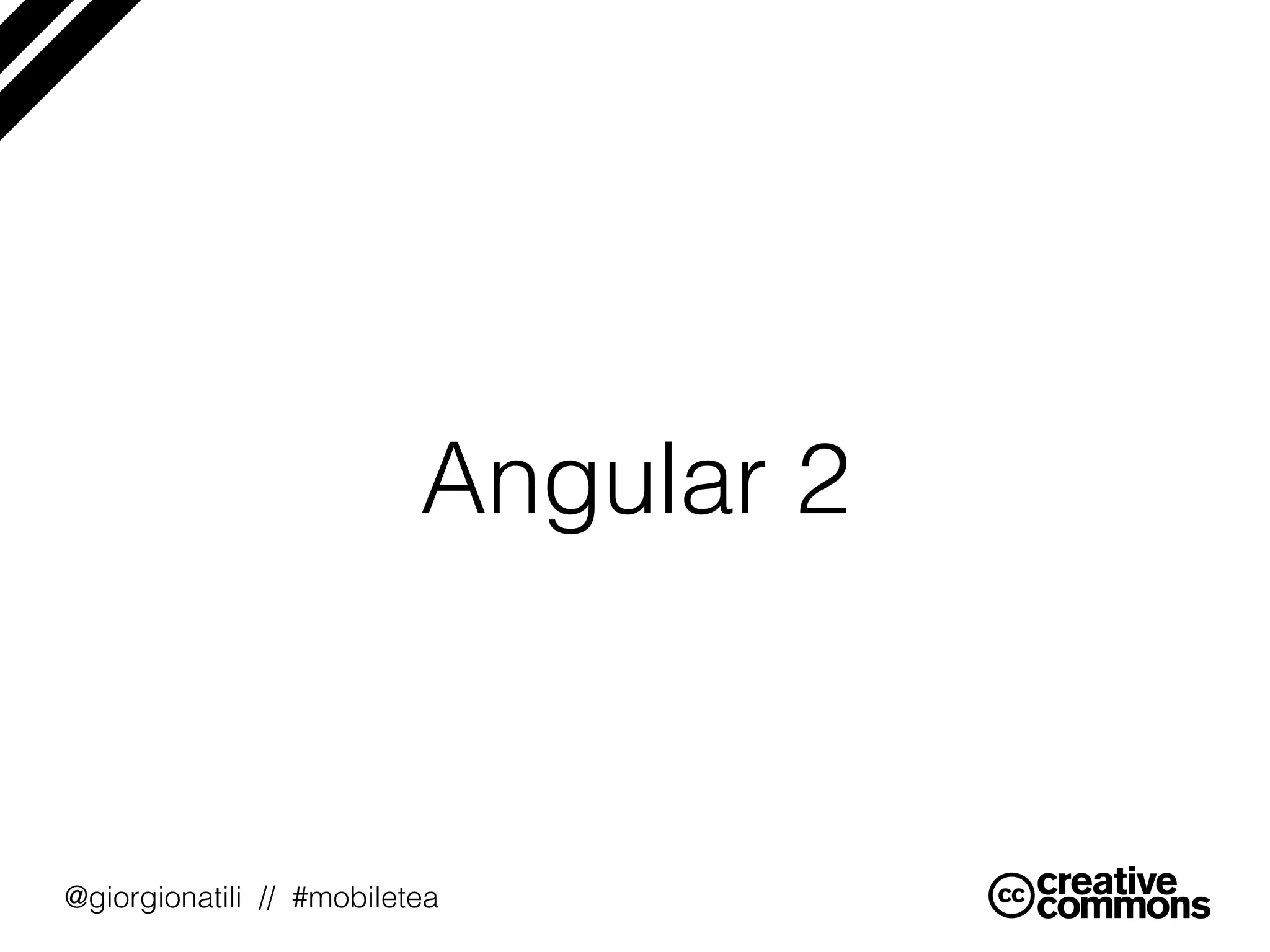
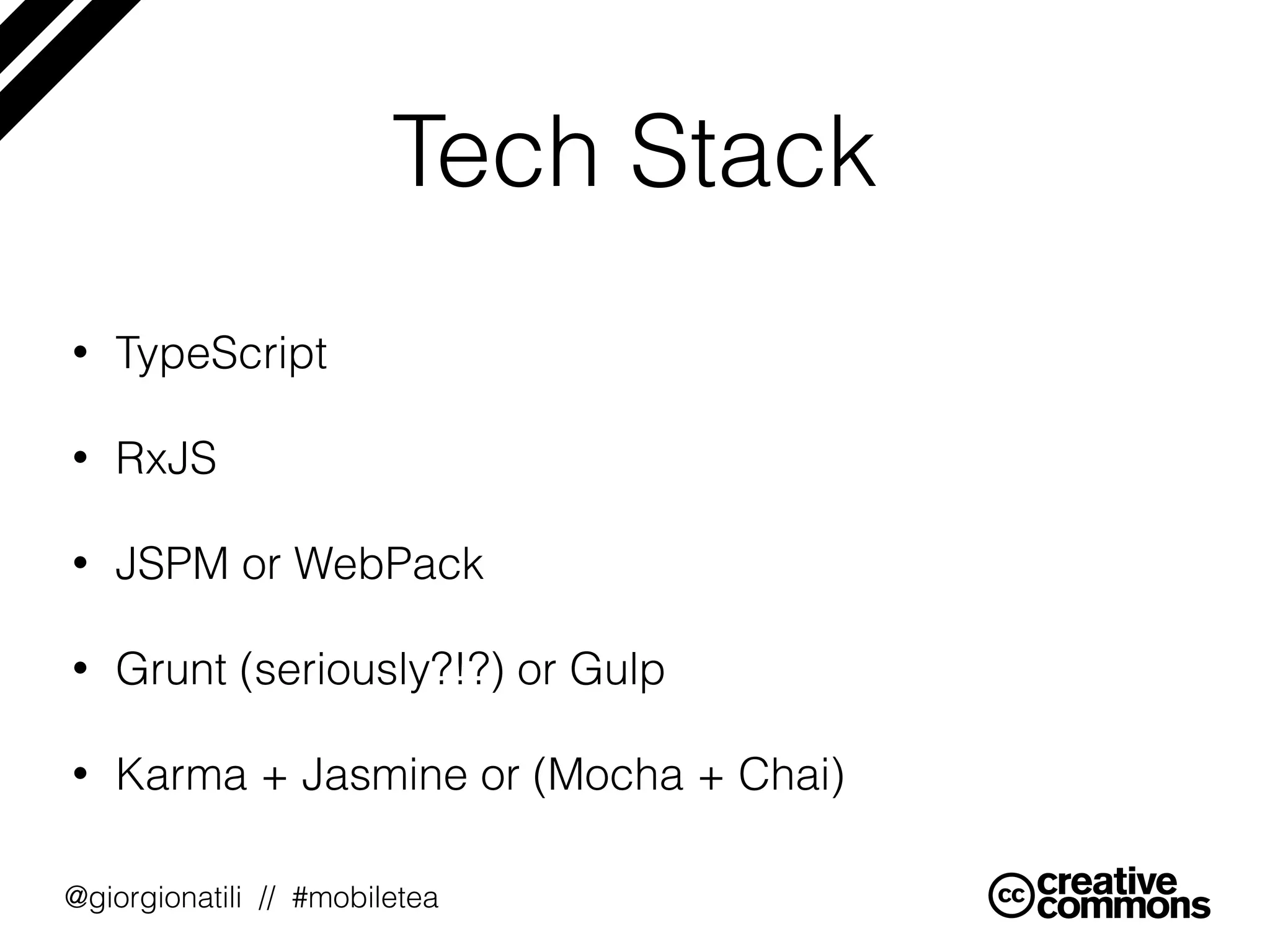
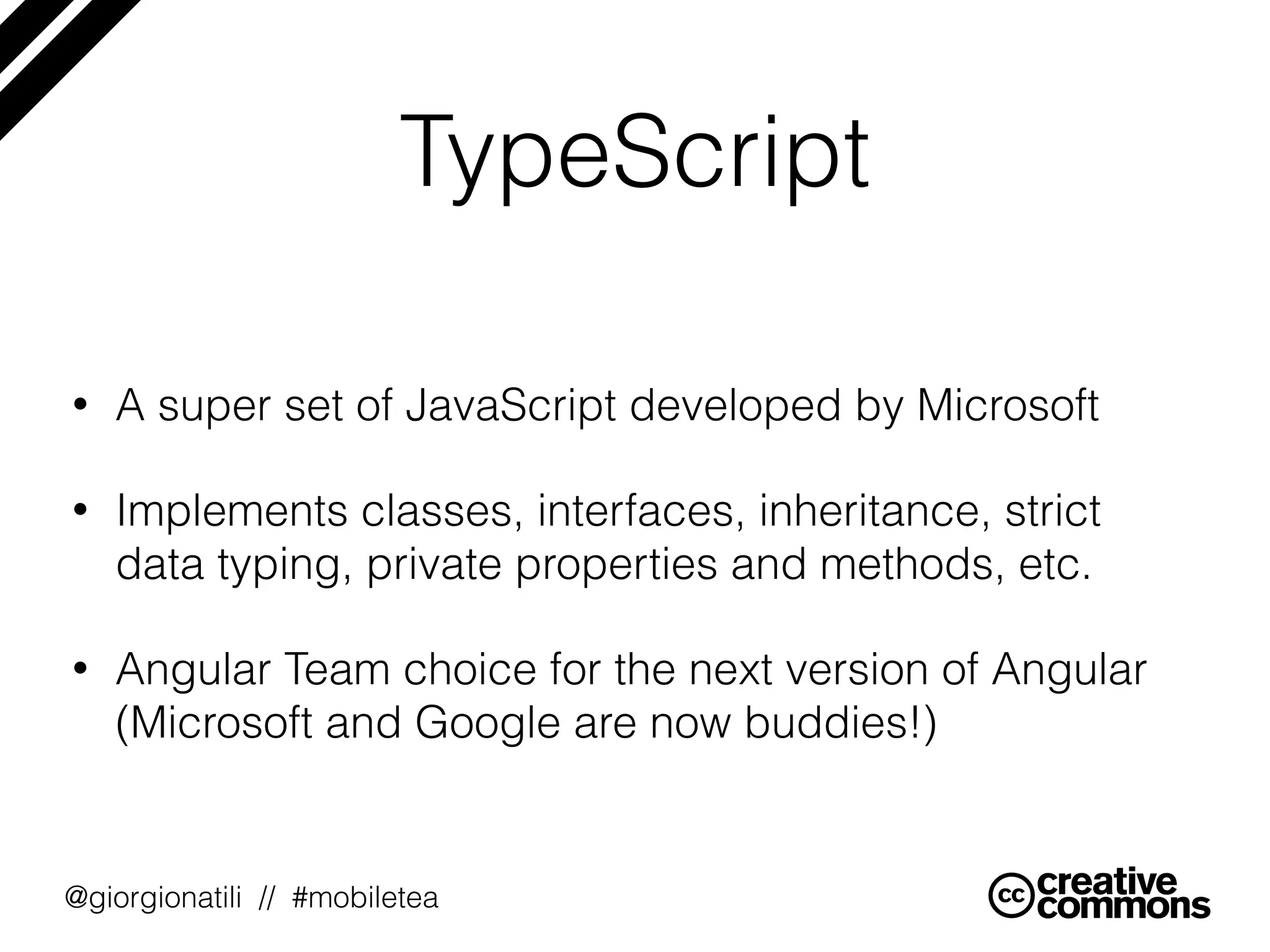
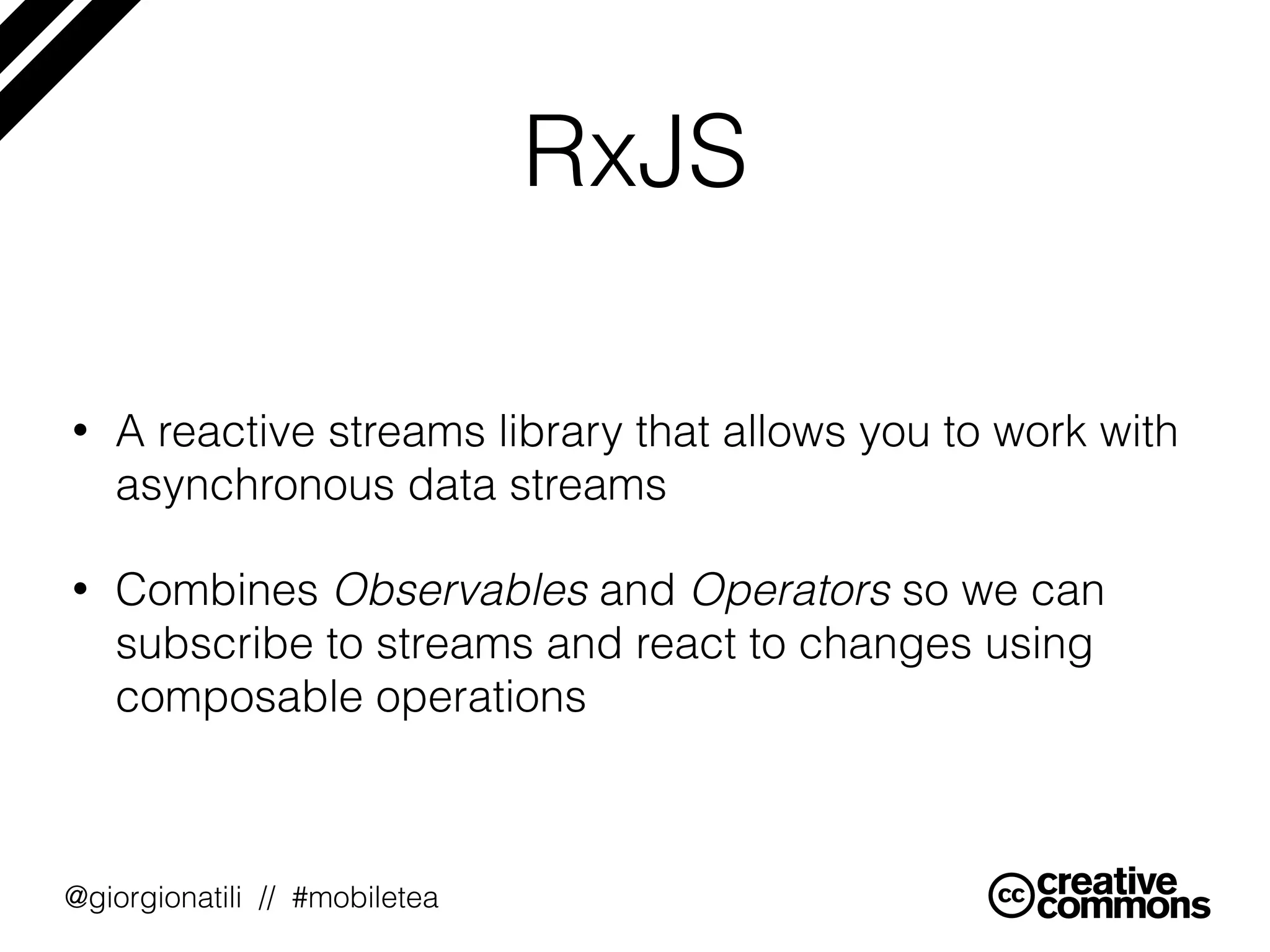
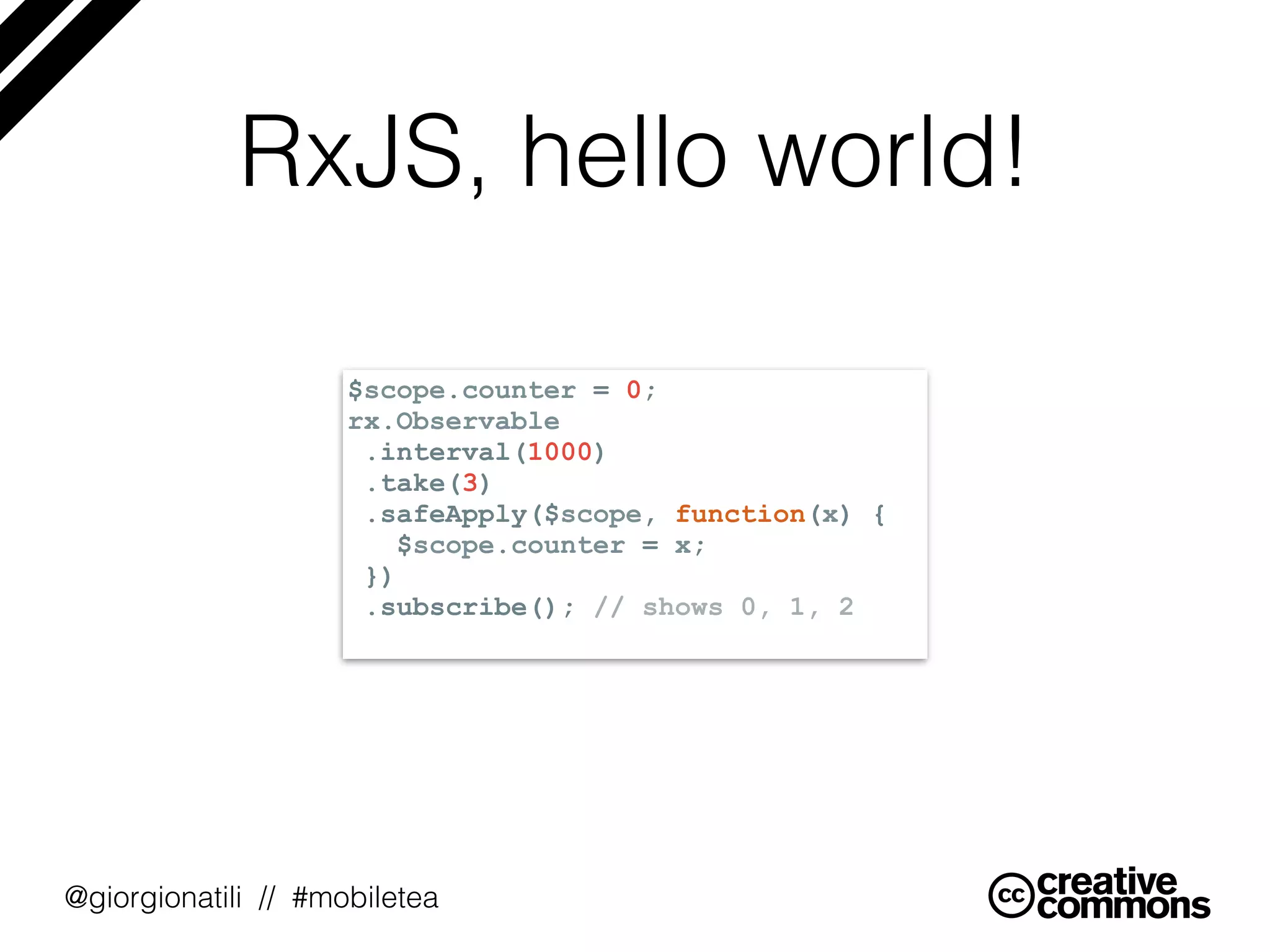
![@giorgionatili // #mobiletea
Integrating Redux
$ npm install angular2-redux
import {AppStore} from "angular2-redux";
import {bootstrap} from "angular2/platform/browser";
// create factory to be called once angular has been bootstrapped
const appStoreFactory = () => {
let reduxAppStore;
// create redux store
// ...
return new AppStore(reduxStore);
};
// bootstrap angular
bootstrap(MyAppComponent,[provide(AppStore, { useFactory:
appStoreFactory })]);](https://image.slidesharecdn.com/codemotion2016-160329152548/75/Reactive-Programming-with-JavaScript-54-2048.jpg)


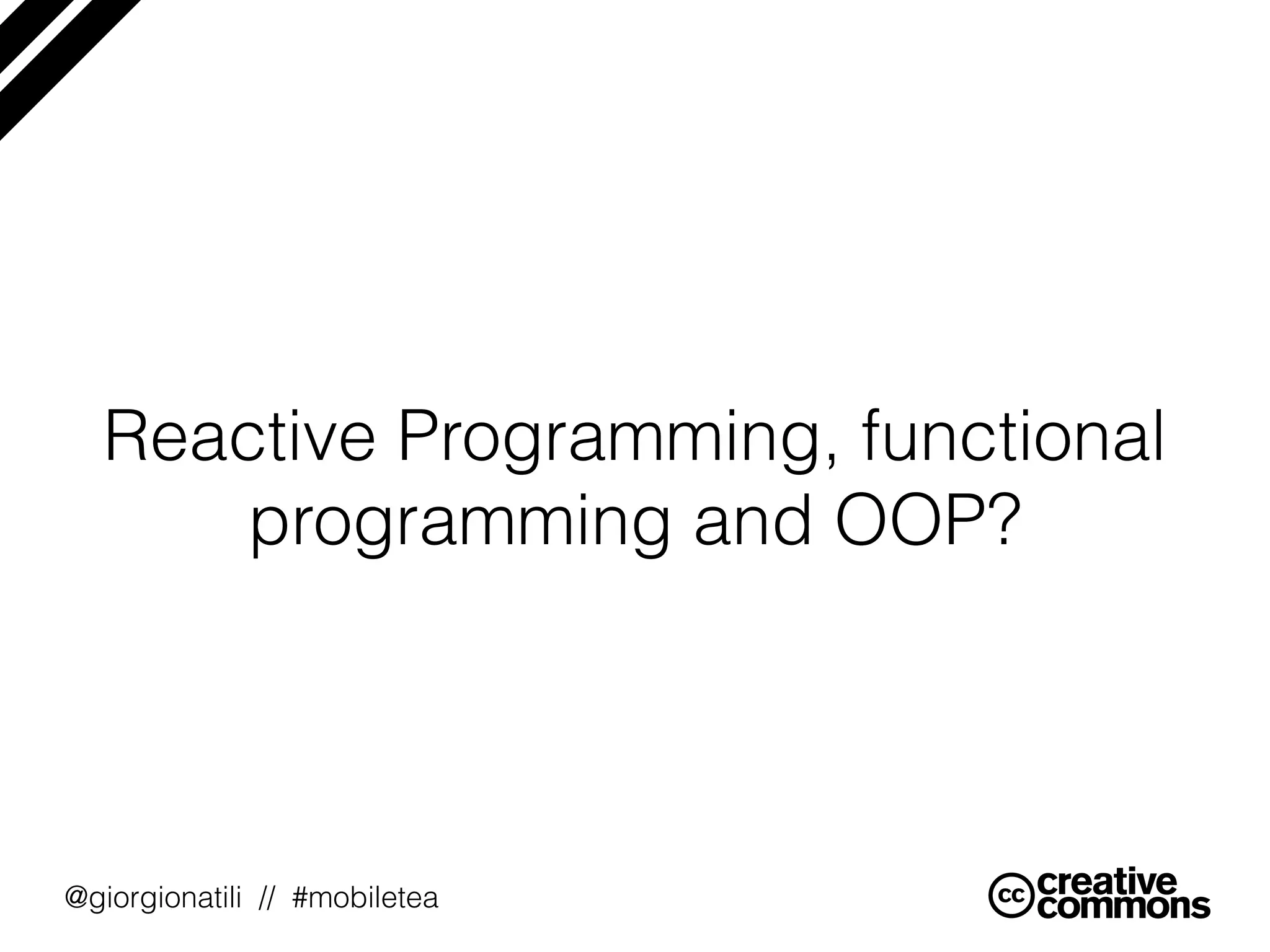

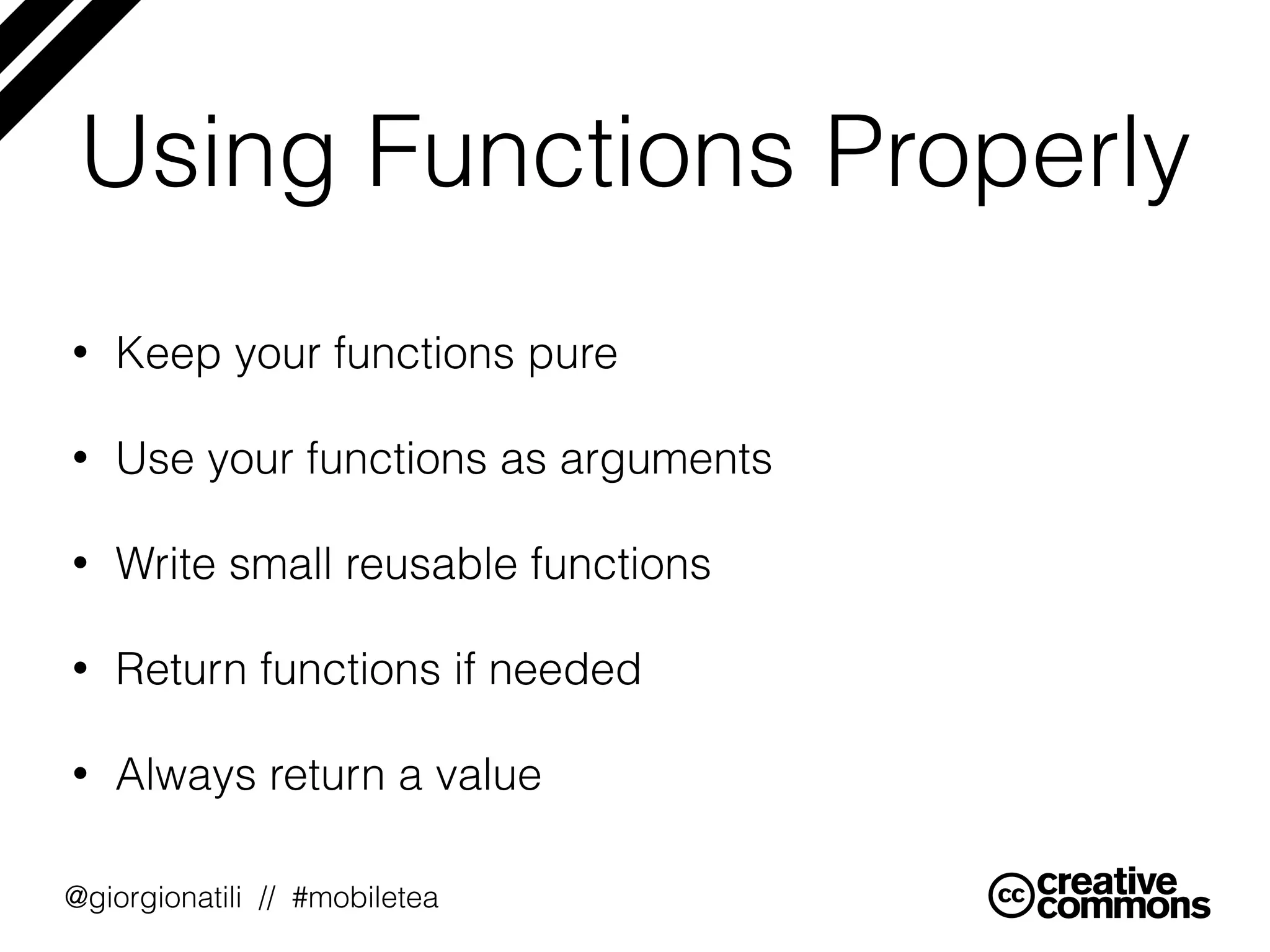
![@giorgionatili // #mobiletea
Taking Advantages from RxJS
import {Http} from 'angular2/http';
import {Observable} from 'rxjs/Observable';
import {Observer} from 'rxjs/Observer';
import 'rxjs/add/operator/share';
import {Todo} from 'app/interfaces';
export class TodosService {
todos$: Observable<Todo[]>;
private _todosObserver: Observer<Todo[]>;
private _dataStore: {
todos: Todo[]
};
constructor(private _http: Http) {
// Create Observable Stream to output our data
this.todos$ = new Observable(observer =>
this._todosObserver = observer).share();
this._dataStore = { todos: [] };
}
}](https://image.slidesharecdn.com/codemotion2016-160329152548/75/Reactive-Programming-with-JavaScript-60-2048.jpg)
